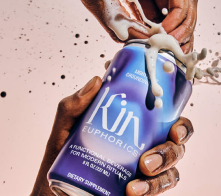We all recognize the value of cart-abandonment emails. But what about those shoppers who don’t actually drop something in the cart? They’re probably just as interested, and may only need another touch or two to activate and become a customer. This is where browse abandonment best practices can help.

A browse abandonment email can remind them of all of the amazing products on your site that they have already viewed and how they’re missing out if they don’t click through to go back.
In this article we will discuss some browse abandonment email best practices. If you need a more thorough primer, check out our Ultimate Guide to Browse Abandonment. And don’t forget to check out our best browse abandonment email templates and be inspired to set up your own flows!
So, you already know the why and the when of sending browse abandonment emails as part of your complete remarketing strategy, but just want to tighten up your email game? Let’s get going!
Browse Abandonment Best Practices
The goal of your browse abandonment email templates is to catch the shopper’s attention and make them want to go back to your site and purchase the items they viewed.
In addition to the normal email marketing best practices, here are a few techniques specific to browse abandonment that you’ll want to follow.
Browse Abandonment Subject Lines
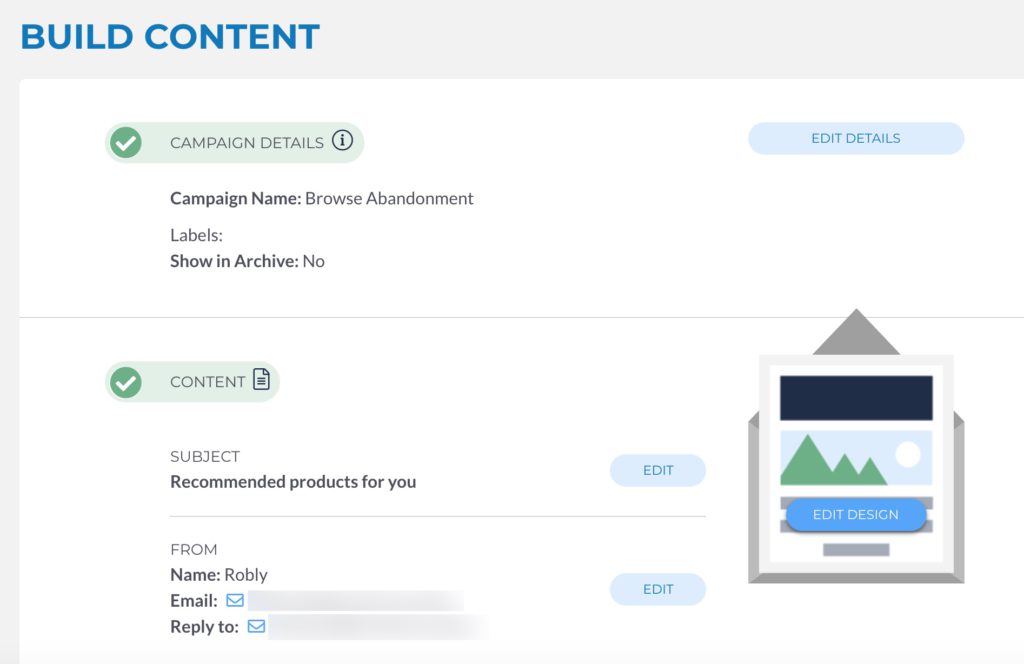
The subject line is the first thing the reader is going to see, so don’t let it disappoint. It’s either going to get them to open the email or send it to their Trash. The purpose of the subject line is to tell them why you’re emailing them and encourage them to check out whatever they were viewing.
Here are some examples of browse abandonment subject lines that work:
- Take a second look
- We saw you checking us out
- Recommended just for you
- Did you see something you liked?
- [NAME], your [PRODUCT] is waiting!
- We noticed you noticing something pretty great
- We saw you peeping…
- Caught you lurking…
These can be similar to cart abandonment email subject lines, but of course, you wouldn’t say they left something in their cart or anything like that. You would use words more like “viewed,” “saw,” or “looked.”
Stick with something that’s short, sweet, and to the point. You can add in a touch of personalization or an emoji to help the email stand out, as well.
Browse Abandonment Content

Once they open your email, you want to make it worth their while. And luckily for you, browse abandonment emails don’t have to be in-depth or flashy when it comes to the content. Actually, it’s better when they aren’t.
Here are the basic elements you’ll want in the body of the email:
- Tell them why they are getting the email (i.e. they browsed and left)
- Prominent call to action (CTA) to get back to the product(s)
- Photo, description, and price of the item(s)
All of these components make it easier for the user to recollect what they abandoned.
Here are some more in depth content tips to ensure the best possible engagement:
Create urgency
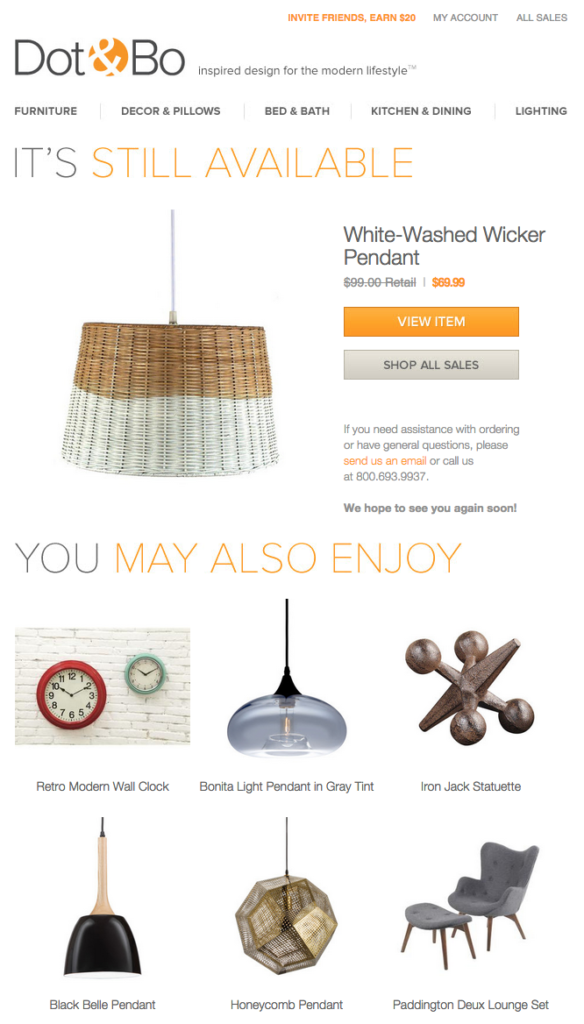
Just like you want to send the browse abandonment email shortly after they leave your site, you also want them to head back to your website ASAP. You can do that by creating a sense of urgency and fear of missing out (FOMO).
For example:
- Tell them there are only a few left — giving them a specific number of items left. Or, give them a coupon for the product category that expires in a few days. That way, they can use it on another item if the one they initially browsed wasn’t exactly what they were looking for.
Reminders
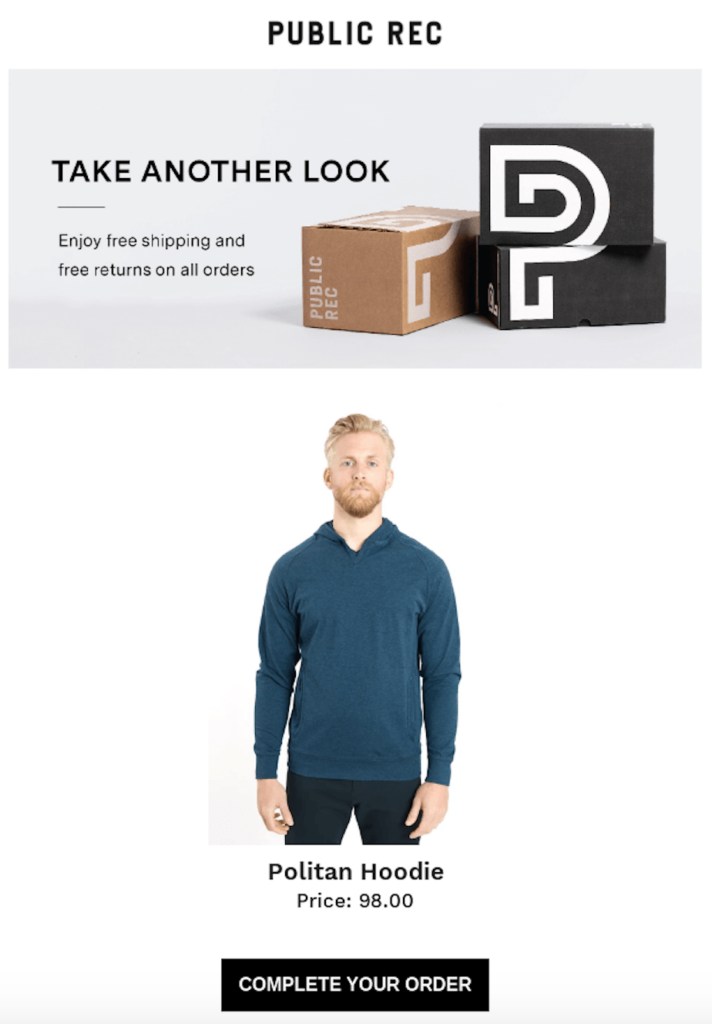
You want the shopper to know you’re emailing them because they browsed your site, like this email from Public Rec. If you don’t tell them why you’re emailing them, you’re simply sending a promotional email. Or, they could think it’s spam if it doesn’t specifically apply to them.
Remind them by keeping the focus on the product they viewed, and give them a clear CTA that will take them back to it.
Get Personal (not creepy)
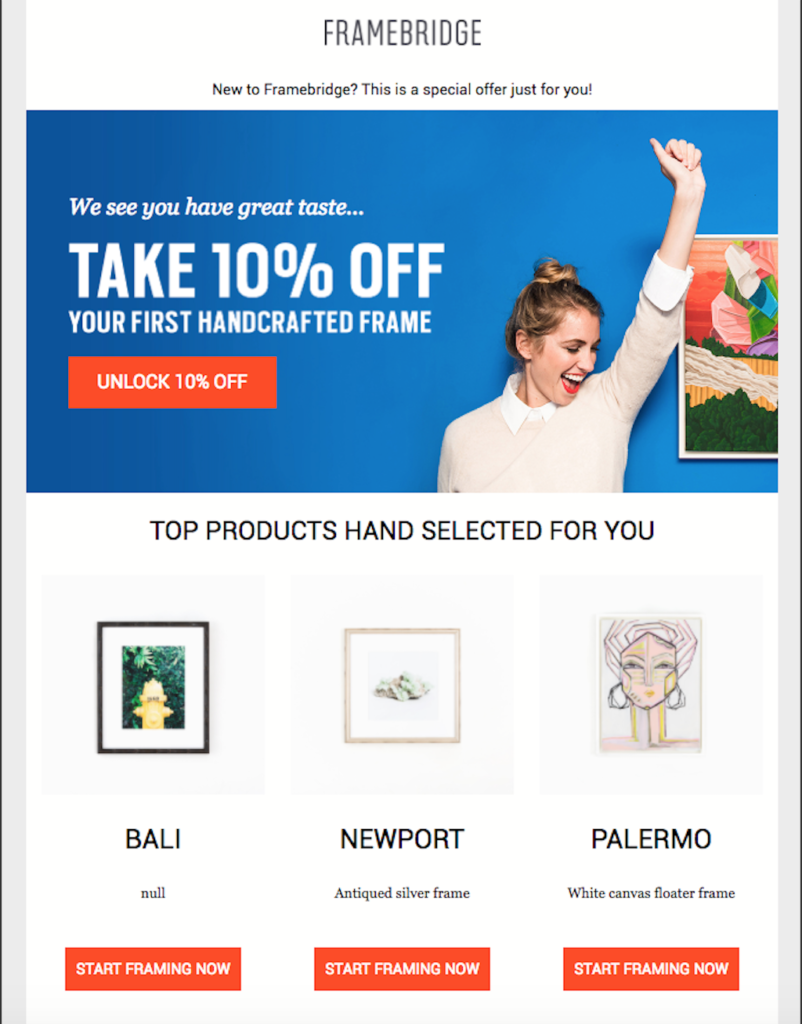
Consumers are becoming more comfortable with email retargeting, to a certain extent. And as more brands are focusing on browse abandonment, shoppers will come to expect this type of message.
To help yours stand out from the pack, add personal touches, like putting their names in the subject line or email. That will show them:
- They aren’t just a number to your company
- That you care about them as a customer
- The email is for them
- That you know what they’re interested in
While this email marketing practice isn’t new, you still want to be careful with how personal you get. People know their online behaviors are being tracked, but there’s a fine line between personalized and stalker.
For example:
You can thank them for checking out your products and include a link if they want to view it again. But, you wouldn’t want to say something like, “We see you visited our site on Monday at 1:33 p.m. and viewed these 10 pages.”
You get the point.
Recommended Products
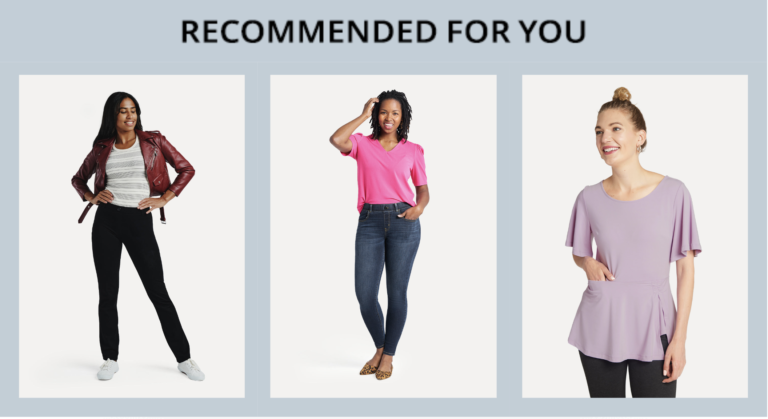
Showing the shopper recommended products is another good tactic for luring them back to your site. The customer browsed your site but didn’t want the specific item they viewed. Maybe they just didn’t find the right one?
Offer products that are similar or related to the browsed item in case they would prefer a different look, style, feature, or price point. It still provides value, even though it isn’t the exact item they originally looked at.
To pull off this method, you’ll need to make sure all of your products are correctly categorized and tagged so your automated emails are able to pull from the correct batch of items when addressing customers. Yes, this does take more work on the back end, but it can be really successful when done right.
The “recommended” approach only works if the items are actually something they would be interested in and closely related to the original item. You wouldn’t send them information on a men’s jacket if they originally viewed dog treats. (Unless it’s some really large dog that’s into wearing human clothes or something. We won’t judge.)
Email Design
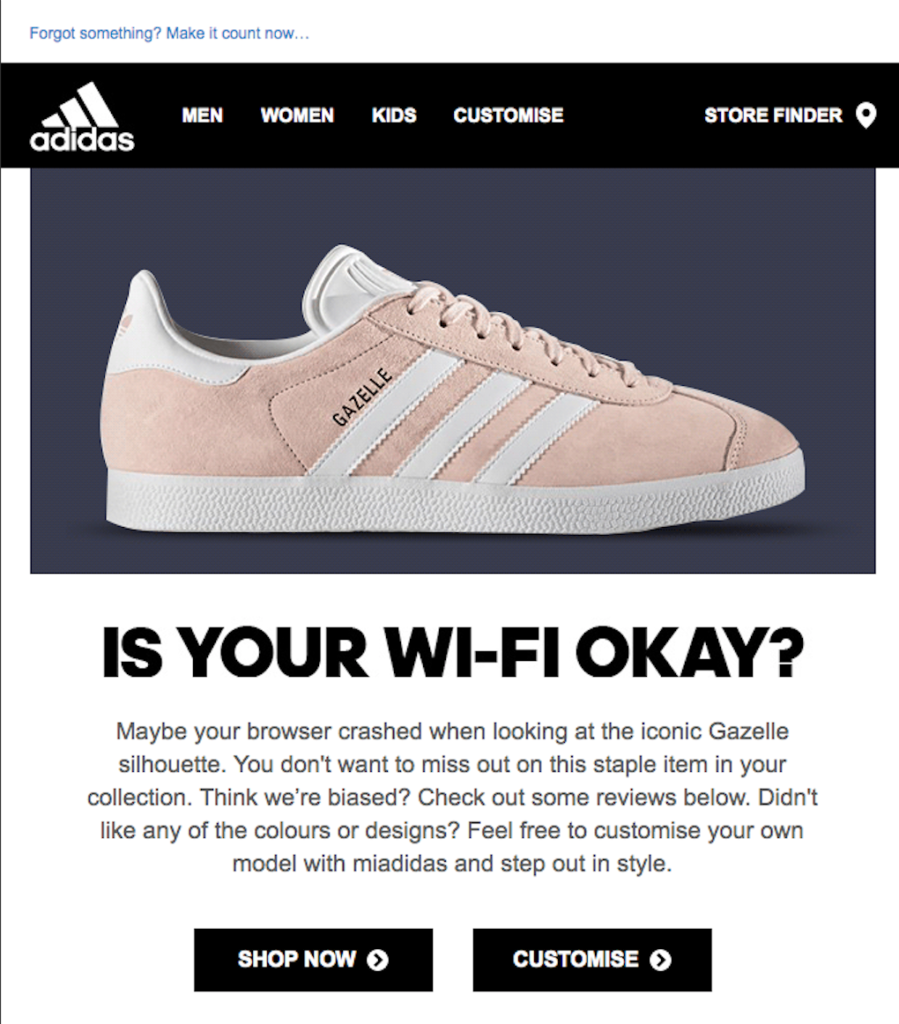
Simplicity is the name of the game when it comes to browse-abandonment templates. The above email from Adidas nails it. If your design is too cluttered, your audience will probably hit delete and move on to one of the dozens of other messages in their inbox. You have a limited amount of time (and space) to make an impression, so make it a good one.
A good technique is to make the product they viewed the main attraction, placing the image, description, and CTA to get back to it near the top of the email below your logo or related header image. If there’s more than one product they viewed, use the one they spent the most time on — or pick one as the main image and include the others at the bottom.
The idea behind showcasing the product is that if they were once interested in it, they are more likely to return to see it again, compared to a random promotional product.
Check Before Sending

Did the online shopper spend a minute on the product page, or did they view it for two seconds? The answer will determine whether or not you email them.
Sometimes visitors accidentally click a link when they intended to view another product. So, if they only spend a second or two on the page, there’s no reason to email them about it. Chances are, they won’t even recognize the product anyway.
Don’t Over-Send

If they received a browse abandonment email last week for a different product, it’s probably too soon to send them another one for the latest item they viewed.
Sending too often can make your email marketing campaigns look like sales materials (not a good thing), and they could start ignoring your messages. Or worse, they could send them to the dreaded spam folder.
What’s next?
So that’s it - make sure you consider the above best practices when designing your bowse abandonment email remarketing campaign, and you’ll see that engagement rate (and ROI) go through the roof!
Looking for some great examples of browse abandonment email templates? Still confused about the how, why, and when? Check out our Ultimate Gude to Browse Abandonment.
Oh, and wondering how you even get access to these browse abandoners?
How do you identify site browsers?
You’ve designed the perfect browse abandonment template, so now you need to know who to send it to. Using cookies to identify and track your current subscribers is a great option. But, what about the anonymous traffic that visits your site but never converts? That’s where Retention.com can help.
You place our snippet script on the pages you want to collect contacts, and we can identify up to 35 percent of your anonymous traffic you would otherwise lose out on. And yes, Retention.com is compliant with the U.S.’s CAN-SPAM Act.
Want to learn more?

In this article, we'll cover why email automation is important for your Shopify and Shopify+ business, especially when it comes to cart abandonment, and we'll walk you through how to do it on one of the most popular automation platforms out there - Klaviyo.
So let's get started!
What's the problem?
Have you ever been shopping online, added an item to your cart, and then left the site without completing the purchase? We've all been there. Life gets in the way, or we get distracted, and before we know it we've abandoned our cart and moved on with our day.
Sometimes we don’t even get to the point of dropping something in the cart. We browse generally, dive deep into a specific category of products, or simply spend time pondering the purchase of just one product.
As an eCommerce business owner, it's important to have email automation in place to recapture shoppers who have abandoned without purchasing. It’s core to any retention marketing plan.
Statistics show that over 70% of people who add items to their online shopping carts abandon them before completing the purchase. That's a lot of potential sales that are being lost! Not to mention the other folks who spent time browsing then disappeared. They’re probably just as interested!
With email automation, you can send a series of emails to shoppers who have abandoned their carts, abandoned their browse, abandoned a category, or abandoned a product, reminding them of the items they were interested in and giving them a special offer or incentive to complete their purchase. Email automation is a highly effective way to increase sales and revenue for your eCommerce business.
Email automation can seem daunting if you've never set it up before, but there are many software platforms out there that make it easy to get started. In this blog post, we'll give you a step-by-step guide on how to set up email automation for your eCommerce business using the popular platform Klaviyo.
Why Email Automation is Important for your Shopify or Shopify+ Businesses
Email automation is important for Shopify businesses because it helps increase sales and revenue by recapturing shoppers who have abandoned their carts. By sending a series of targeted emails reminding shoppers of the items they were interested in and providing them with a special offer or incentive, you can encourage them to complete their purchase.
According to statistics, over 70% of people who add items to their online shopping carts abandon them before completing the purchase. That's a lot of potential sales that are being left on the table! With email automation in place, you can recover some of those lost sales and boost your revenue.
Email automation can also help you create more personalized experiences for your customers and build relationships with them over time. By segmenting your email list and sending targeted emails based on shopper behavior, you can create more relevant and engaging experiences that will make customers want to do business with you again and again.
How to Set Up Email Automation using Klaviyo
Klaviyo is one of the most popular platforms for setting up email automation flows for eCommerce businesses. Klaviyo integrates with Shopify, WooCommerce, BigCommerce, Magento, and custom stores built on other platforms like ReactJS. In addition, Klaviyo offers a wide range of features and customizable options to fit the needs of any business size or type.
Follow these steps to set up your first email flow in Klaviyo:
- Log into your Klaviyo account (or create an account if you don't have one already).
- Click on "Flows" in the left sidebar menu and then click "Create Flow."
- Give your flow a name (for example: "Abandoned Cart Flow") and select "Build from Scratch."
- In the next step, select "Abandoned Cart" as your trigger event type."
- Choose when you want this flow to trigger (for example: "1 hour after an item is added to cart").
- In the next step select "Email" as your desired action type."
- Select which template you want to use for this email (you can choose from pre-built templates or create a custom template).
- Enter the subject line for your email and design your email content (you can use HTML or plain text).
- In the final step, click "Activate Flow."
Now that your flow is set up, Klaviyo will automatically send out emails according to the schedule and trigger events that you specified. You can always go back into your flow at any time and make changes if needed.
You also need a strategy for these emails
Fortunately, we have a trove of resources to help you out at every turn. Check out these articles for deep dives on the following topics:
You should find everything you need in those links to build a robust marketing program around abandonment flows.
There’s still one question in your head, though… how do I even identify who these abandoners are, if they haven’t signed up or purchased something from me in the past?
Grow Your First-Party Dataset, and Unlock A Whole New Segment of Interested Customers
Retention.com specializes in retention marketing and e-commerce solutions, including cart abandonment and re-engaging potentially lost customers. We provide one-click integrations with leading marketing automation platforms.
Our dashboard features a user-friendly interface to easily connect to any email marketing application in under a minute. Retention’s integrations automatically update and suppress contacts daily.
We can help you reclaim up to ten times more abandonment revenue by leveraging industry-leading Identity Resolution technology. When an unidentified customer abandons a cart, we identify them. Then a personalized flow automatically triggers in the messaging platform.
Scale up your abandonment flows and improve your retention marketing strategy. Get in touch with Retention.com today to find out how we can help.
Conclusion
Email automation is key for any eCommerce business that wants to boost sales and revenue. By sending targeted emails reminding shoppers of items they were interested in and providing them with an incentive to complete their purchase, businesses can increase their conversion rate and recapture lost sales.

Abandoned carts can be the bain of a Shopify eCommerce brand’s existence. Imagine being a brick-and-mortar store and having people walk in, fill up carts, and then simply walk out, leaving a jumble of filled shopping carts near the front door.
It happens in the outside world too, but it's epidemic online. And these abandoned carts represent billions in lost revenue. That’s why every Shopify and Shopify+ brand should have a strong abandoned cart plan as part of their overall retention marketing strategy.
This article will look at some of the top reasons that shoppers abandon their carts, and what you can do to not only minimize abandonment but also to get some of those shoppers back in to make the purchase.
Top Reasons That Shoppers Abandon Carts
Why, oh why, do they do it?
Lack of urgency
Shoppers don't feel a sense of urgency to complete their purchase when they're just browsing an online store. They can always come back later and buy the item, so there's no need to act now.Second-guessing the purchase
Second-guessing the purchase
Will this item really be worth it? Is it the best quality? Do I really need it? shoppers may have doubts about an item before finalizing their purchase.
Distractions
Online shoppers can get easily distracted by other tabs, notifications, or emails. Once they click away from your website, they may not come back.
Complicated checkout process
If the checkout process is too complicated or takes too long, shoppers get frustrated. This one happens plenty in the physical world as well.
What Can Shopify Brands Do to Prevent Abandoned Carts?
Obviously, it’s hard to control for some of the reasons above. You can’t keep a shopper from getting distracted by an email or call, can you? So you focus on what you can control. Oh and don’t worry, we’ll show get to how you win back those distracted shoppers later.
What Can You Control?
Let's focus on #4 above - a complicated checkout process. What are some of the main reasons consumers find checkout processes too complicated?
Too many steps:
Online shoppers want to be able to check out quickly and easily. If there are too many steps involved in the process, they will likely abandon their cart.
How can e-commerce brands avoid having too many steps in their checkout process?
- Use a one-click checkout option for returning customers
- Offer a guest checkout option
- Use auto-fill forms to reduce the amount of data entry required
Required account creation:
Some websites require users to create an account before they can checkout. Many shoppers simply do not want to create an account in order to complete their purchase. If this is a requirement, they will likely leave your site and find a similar product elsewhere.
What is your solution to this? Allow guest checkout. You can still capture vital information like name, address, phone and email, which every shopper expects to have to give to make a purchase. Once you have this identifying information, you can continue to market to them and convert them to account holders down the road.
Hidden fees:
Nothing is more frustrating to an online shopper than finding out there are hidden fees at the end of the checkout process. These unexpected costs can cause shoppers to abandon their purchase altogether. This can include things like shipping or VAT that were hidden from the customer until deeper into the checkout process.
You can solve this by being transparent early in the cart process as to what fees will be included, or simply add them to the total cart cost as the customer is shopping.
Confusing layout:
If the layout of the checkout page is confusing or difficult to navigate, shoppers may become frustrated and abandon. Keep it simple - customers should be able to easily go back a step and make changes without losing the inputs they have already made. Don’t make them enter info twice. The road to purchasing should be clearly marked and easy to get to.
Difficult payment options:
If the shopper is having trouble inputting payment options, they will likely prefer to buy from a competitor that has ApplePay, Paypal, or other widely-used and easily automated services. Some people simply find that getting their credit card out of their wallet is more daunting than just finding the product on another site with easier checkout options.
This one is a no-brainer, but you should be employing every mainstream payment option out there.
But even if you work against all of the above, shoppers will still abandon carts… it’s just a fact of eCommerce life. What’s a brand to do about it?
Capture abandoned cart user identity, and bring them back with email and SMS marketing.
Abandoned Cart Email Marketing
Email marketing to cart abandoners will help get them past some of the other stumbling blocks mentioned in the intro, like a lack of sense of urgency, or second-guessing the purchase. It can also help recapture shoppers who simply got distracted before they checked out.
You can send a series of email reminders, each with a different offer or incentive, to encourage them to come back and complete their purchase.
Here are some high-level tips for your abandoned cart email strategy:
- Create urgency with email subject lines: Use words and phrases like "last chance," "act now," or "expiring soon" to create a sense of urgency in your email subject lines. This will encourage shoppers to open and click through to your email.
- Use images and videos: Include images and videos in your email to help capture the shopper's attention. This can be helpful in showing off a new product or demonstrating how to use a product.
- Use countdown timers: Adding a countdown timer to your email creates a sense of urgency for shoppers to act now before it's too late. This can be an effective way to encourage abandoned cart email conversion.
- Offer discounts and coupons: Offering a discount or coupon in your email can be a great incentive for shoppers to come back and complete their purchase. Be sure to include an expiration date on the offer to create a sense of urgency.
Provide free shipping: Free shipping is another great incentive for online shoppers. If you're able to offer free shipping on an order, be sure to include that information in your email.
- Make it easy to purchase: Include a link back to the product page in your email so shoppers can easily find and purchase the item they were interested in. You may also want to consider including a guest checkout option to make it even easier for shoppers to complete their purchases without creating an account.
This is just the tip of the iceberg though…
Abandoned Carts Resource Library
Fortunately, we have a trove of resources to help you out at every turn. Check out these articles for deep dives on the following topics:
You should find everything you need in those links to build a robust marketing program around abandonment flows.
There’s still one question in your head, though… how do I even identify who these abandoners are if they haven’t signed up or purchased something from me in the past?
Grow Your First-Party Dataset, and Unlock A Whole New Segment of Interested Customers
Retention.com specializes in retention marketing and e-commerce solutions, including cart abandonment and re-engaging potentially lost customers. We provide one-click integrations with leading marketing automation platforms.
Our dashboard features a user-friendly interface to easily connect to any email marketing application in under a minute. Retention’s integrations automatically update and suppress contacts daily.
We can help you reclaim up to ten times more abandonment revenue by leveraging industry-leading Identity Resolution technology. When an unidentified customer abandons a cart, we identify them. Then a personalized flow automatically triggers in the messaging platform.
Scale up your abandonment flows and improve your retention marketing strategy. Get in touch with Retention.com today to find out how we can help.
Conclusion
Email marketing can be a powerful tool in getting shoppers to come back and complete their purchases. By using email subject lines, images, videos, and countdown timers, you can create a sense of urgency that will encourage abandoned cart email conversion. And by offering discounts, coupons, and free shipping, you can provide shoppers with incentives to come back and buy. So if you're looking to recapture lost sales, email marketing is a great place to start.

Shopify brands need to focus on a few key things in order to build a strong email marketing plan that will result in more sales and conversions. Here are the five simple marketing steps for Shopify brands.
Follow these 5 simple Shopify marketing steps
1: Send relevant and targeted emails:
One of the most important things Shopify brands can do is to send relevant and targeted emails to their subscribers. This means segmenting your list and sending personalized emails that are relevant to each subscriber’s interests.
2: Use an automation platform:
An automation platform will help Shopify brands save time and energy by automating email campaigns. This way, you can set up your email campaigns in advance and emails will be sent out automatically according to your schedule.
There are a number of automation platforms Shopify brands can use, but the following five are considered to be the best for Shopify and Shopify+ direct-to-consumer brands:
- Klaviyo
- Omnisend
- Sendinblue
- HubSpot
- Drip
Each of these platforms offers different features and benefits, so brands should choose the one that best suits their needs. However, all of them offer great features that can help Shopify brands save time and energy by automating email campaigns.
3: Send timely emails:
Another important thing to keep in mind is to send your emails in a timely manner. This means sending emails when your subscribers are most likely to be engaged and checking their inboxes.
When are your subscribers most likely to be engaged and checking their inboxes?
There is no one-size-fits-all answer to this question, as it will vary depending on the Shopify brand and its subscribers. However, there are a few general things to keep in mind.
For example, sending emails during weekday mornings or evenings is usually a good time, as people are more likely to be checking their inboxes then. Additionally, brands should experiment with different times and days to see when their subscribers are most engaged and make adjustments accordingly.
4: Use engaging subject lines:
Your email’s subject line is the first thing your subscribers will see, so it’s important to make it catchy and interesting. This will entice them to open your email and read its contents.
What are some good examples of email subject lines that brands can use to be catchy and interesting?
There is no one-size-fits-all answer to this question, as the best email subject lines will vary depending on your brand and its audience. However, here are a few examples of good email subject lines to get you started:
- “New arrivals just in time for spring!”
- “Major sale! Up to 50% off everything!”
- “Introducing our newest product…”
- “You won’t believe what we have in store for you!”
- “Time’s running out! Get your hands on these deals before they disappear!”
5: Include a call-to-action:
Every email you send should have a call-to-action (CTA) that tells your subscribers what you want them to do next. Whether it’s clicking through to your website or making a purchase, make sure your CTA is clear and concise.
The best CTAs will vary depending on the brand and its audience. However, here are a few examples of good CTAs:
- “Shop now!”
- “Add to cart!”
- “Check out our latest arrivals!”
- “Sign up for our newsletter to get the latest deals!”
- “Follow us on social media for more updates!”
But the most important tip of all?
Work with retention marketing professionals
Retention.com specializes in retention marketing and e-commerce solutions, including cart abandonment and re-engaging potentially lost customers. We provide one-click integrations with leading marketing automation platforms.
Our dashboard features a user-friendly interface to easily connect to any email marketing application in under a minute. Retention’s integrations automatically update and suppress contacts daily.
We can help you reclaim up to ten times more abandonment revenue by leveraging industry-leading Identity Resolution technology. When an unidentified customer abandons a cart, we identify them. Then a personalized flow automatically triggers in the messaging platform.
Scale up your abandonment flows and improve your retention marketing strategy. Get in touch with Retention.com today to find out how we can help.
Resource Library for Shopify Marketing
Also, we have a trove of resources to help you out at every turn. Check out these articles for deep dives on the following topics:
This should get you started on the path to success.
It never feels good when someone visits your site and then leaves before making a purchase, especially when they’ve been viewing some of your products. Stings a little, doesn't it? They obviously have some level of interest in your products, especially if they have visited and viewed items multiple times.
These potential customers are like digital window shoppers since they never added an item to their cart. Luckily, there’s an automated marketing campaign you can use to lure them back to your site — and we’ve got plenty of browse abandonment examples to give you ideas on how to create yours, don't worry.
While cart abandonment normally gets marketers' attention, there’s a lot you can (and should) do to win back shoppers who have looked at your products. Even though they haven’t added anything to their cart, there’s obviously some interest if they are looking at the items.
Sure, there’s going to be a lower conversion rate for browse abandonment visitors compared to cart abandonment visitors, considering they are a step behind those users. However, the pool of browse abandonment is much larger because more people view your products, compared to the smaller number who actually add items to their cart. And you don’t want to miss out on any of them.
With the right tools, you can track which pages they viewed so you can send them automated emails specifically tailored to the types of product categories they are most interested in.
In this article, we’ll cover:
- What are browse abandonment emails?
- Why send browse abandonment emails?
- Browse abandonment best practices
- Browse abandonment examples (with photos)
- How to collect anonymous email addresses
Ready to round out your retention marketing strategy and start bringing back your lost potential customers? Then let’s jump right in!
What are browse abandonment emails?
Simply put, browse abandonment is when:
- Someone visits your website, views a product or category, and leaves without adding any items to their cart.
That’s why, so often, this practice is referred to as window shopping. However, don’t confuse browse abandonment with cart abandonment, since those are two different stages.
Whereas cart abandonment is as close as someone can get to making a purchase without actually doing so, browse abandonment is a step behind that. However, it’s just as important to engage these site visitors because they have some level of interest in what you’re offering.
Why send browse abandonment emails?
This type of marketing campaign checks off several email best practices: It provides targeted content at just the right time to an audience that has shown interest in your products or services (when done correctly, that is).
You aren’t sending out a bulk email about your products, hoping one of your subscribers is interested in something in the campaign. No, you’re sending a personalized message based on an action they made at just the right moment (preferably within 30 minutes to an hour of when they visited your site). Those are the ingredients for an engaging campaign that can bring you serious ROI. Do we have your attention now?
These emails help keep your visitors involved with the product and tempt them to go back to your site to see more (or revisit what they already looked at).
We’ve shared these statistics before, but just consider this:
- 97 percent of first-time users leave an e-commerce store without making a purchase
- 85 percent of those users never add anything to their cart
- 42 percent of revenue is generated from browse abandonment campaigns
The numbers don’t lie. So, if you aren’t already implementing browse abandonment emails into your email marketing strategy, now is the time to start.
Browse abandonment best practices
There are a few ways to structure your browse abandonment emails, so we suggest testing them out to see which ones bring you the best results:
- Include the exact product(s) they viewed
- Recommend the top products in the category they looked at (ex. “If you liked that, you’ll like this”)
- Suggest “frequently purchased together” items
Or if you want to really go for it, combine a variety of these methods into one email campaign.
Helping you get that message across are these different email marketing components and browse abandonment examples.
Crafting the perfect subject line

Before they open your email for the main messaging, you first need to catch their attention with the subject line. Here are a few browse abandonment subject line examples to use:
- We saw you checking us out
- Recommended just for you
- Take a second look
- Did you see something you liked?
- We saw you peeping…
You can personalize the subject line to stand out even more, like including their name and/or the product:
- [NAME], your [PRODUCT] is waiting!
Get them back to your site
Once they are inside your email, everything (from the content to the CTA) needs to be about getting them back to your site to check out your products. So, make sure your browse abandonment emails:
- Remind them about the category they were looking at on your site so you can get them back into purchasing mode.
- Make it easy for them to find the most popular products on your site.
Since they didn’t add the item to their cart, they might not have been sold on the items they were looking at. Showing them other options — especially ones you know other customers like — helps them see what else is available.
https://www.youtube.com/watch?v=W_tPhVVRNkU&feature=emb_title
Browse abandonment emails aren’t too different from the ones you’d send when someone abandons their cart. Instead of letting the shopper know they left something in their cart, you can say things like “we saw you looking,” “we noticed you browsing our site,” or “we thought you’d enjoy this.” That lets them know why you’re emailing them and also that this message is targeted specifically for them.
When to suppress
Just like you would suppress your email lists in Retention.com to keep from paying for contacts you already have, you’ll also want to use suppression with your browse abandonment campaigns. For example, if someone views 20 different product categories, you don’t want to hit them with 20 different email campaigns at once. No one cares that much about your products.
Use your autoresponder campaign and suppression to:
- Block them from receiving too many campaigns.
- Stop them from getting a browse abandonment email for that item if they later convert.
- Don’t send a browse abandonment campaign to someone who has engaged (opened or clicked) with a previous campaign.
For example, if they’ve opened a browse abandonment campaign in the past 60 days, don’t send them another one. Or, if they’ve made a purchase in the past month, you can suppress their email address, too.
Your campaigns are trying to reach people who looked and left, not ones who have already engaged or converted recently. And you can use suppression to keep from sending those people too many messages.
11 browse abandonment examples
Need a little inspiration for your next campaign but not sure where to start? We’ve put together 11 browse abandonment examples to get those creative marketing juices flowing. See how different brands handle their browse abandonment emails, from their subject lines down to their content and images.
1. American Giant
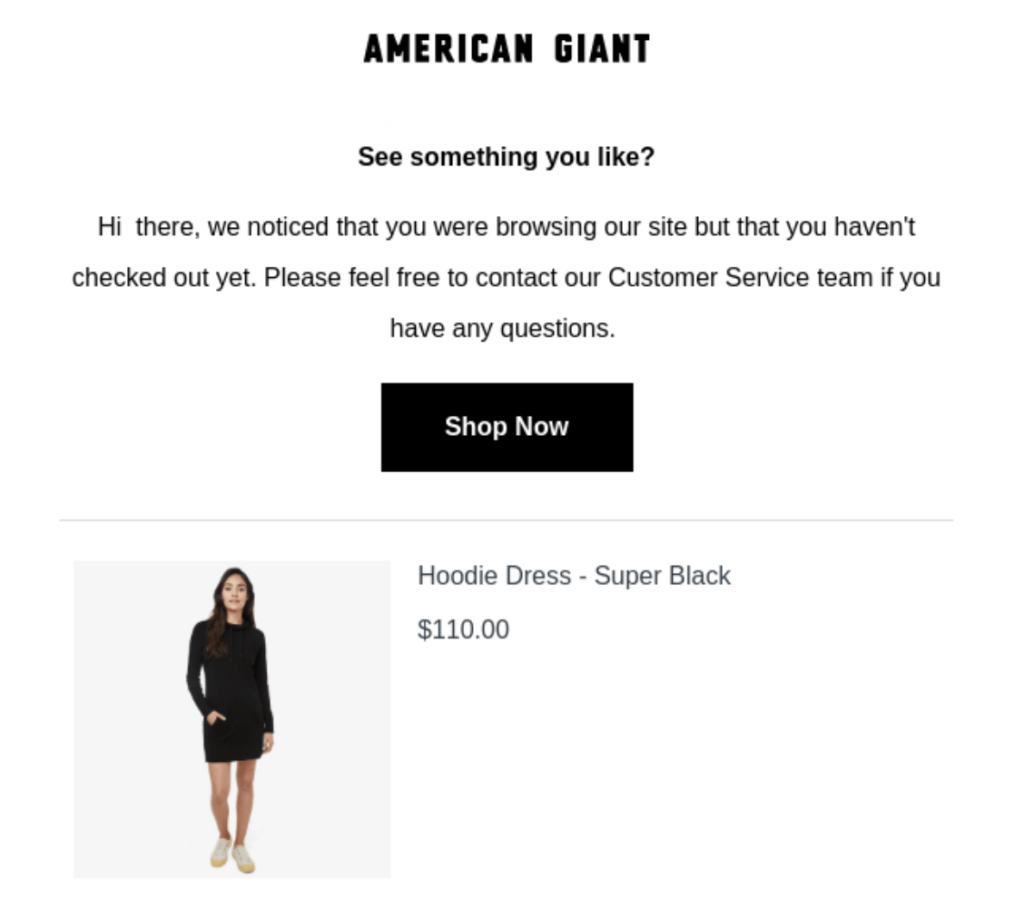
- Subject line: Did you see something you liked?
Simple and straight to the point is a great tactic for browse abandonment emails, which is exactly what American Giant did with this email campaign. It features the product they viewed with a brief paragraph of text.
We like how they say, “You haven’t checked out yet,” even though the item was never in their cart. It’s also clear why the person is receiving this email, another plus.
2. Public Rec

- Subject line: You forgot something
Do you know what the No. 1 hurdle is for shoppers and what keeps them from making a purchase? Shipping costs. That’s why this browse abandonment example from Public Rec perfectly addresses a pain point that just might get the shopper back to their site. After reminding them to take another look, their email says, “Enjoy free shipping and free returns on all orders.”
That’s followed by an image, price, and CTA for the product they viewed. If the reason they left before making a purchase had to do with shipping costs, you’ve just won them back over.
3. MCM
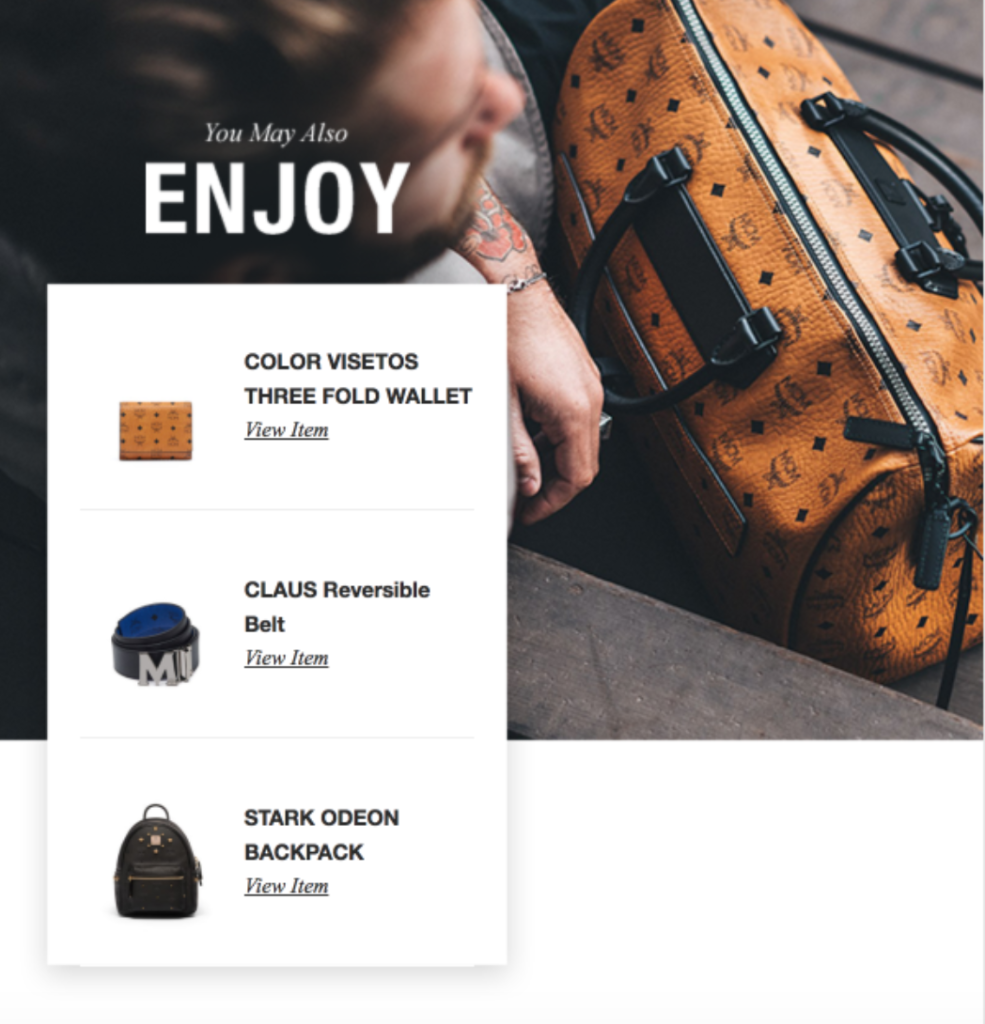
- Subject line: Did you forget something?
In the bottom part of this email, MCM used the technique of showing similar products within the same category as the item the visitors viewed. They titled this section, “You may also enjoy,” followed by three products with links to view each item.
Three is a popular choice for how many products to show. It’s enough to give them some variety, but it doesn’t overwhelm them with options.
We like how they include photos of different products with individual links. However, we’d like to see prices for the different items included. The more information, the better.
4. LNER

- Subject line: [NAME], the journey to London Kings Cross won’t be the same without you
If your site requires users to search for specifics — like with travel sites — do them a favor and save their searches, like London North Eastern Railways. And then send them a browse abandonment email letting them know you saved them.
Just like shipping costs can be a major roadblock for e-commerce sites, having to look up (and remember) dates, routes, and other information can keep people from going back to your site to complete their purchase. Anytime you can make the buying process easier, do it.
5. UNIQLO
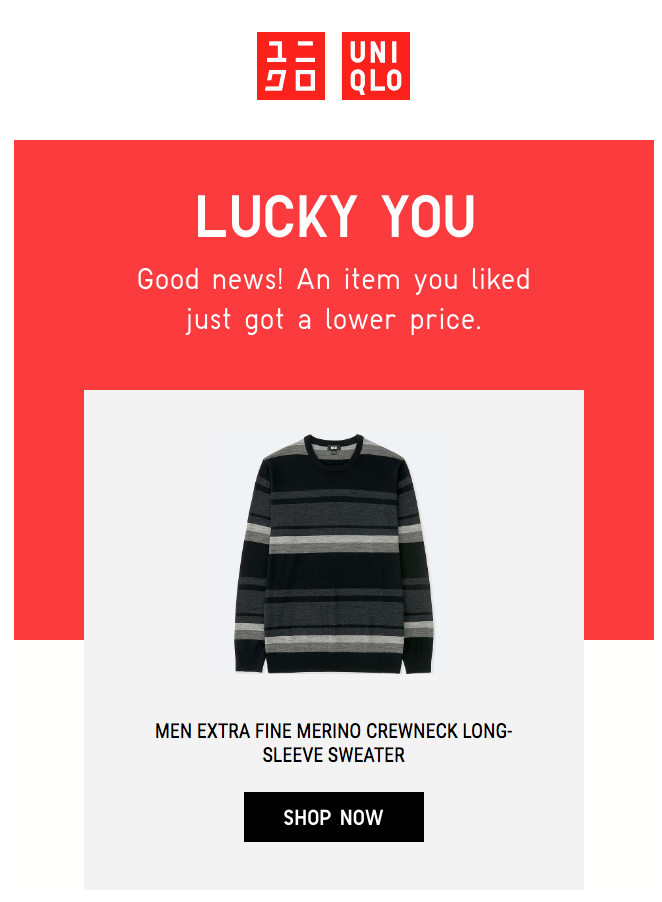
- Subject line: Open to see the new price
What better way to get a shopper to open your email than by using a subject line that tells them of a specific payoff they’ll receive? That’s exactly what UNIQLO does in this campaign. Not only does this email example remind them of an item they viewed, but it also gives the shopper an added incentive to go back because now that item is available at a lower price. Everyone loves a discount!
6. 23andMe
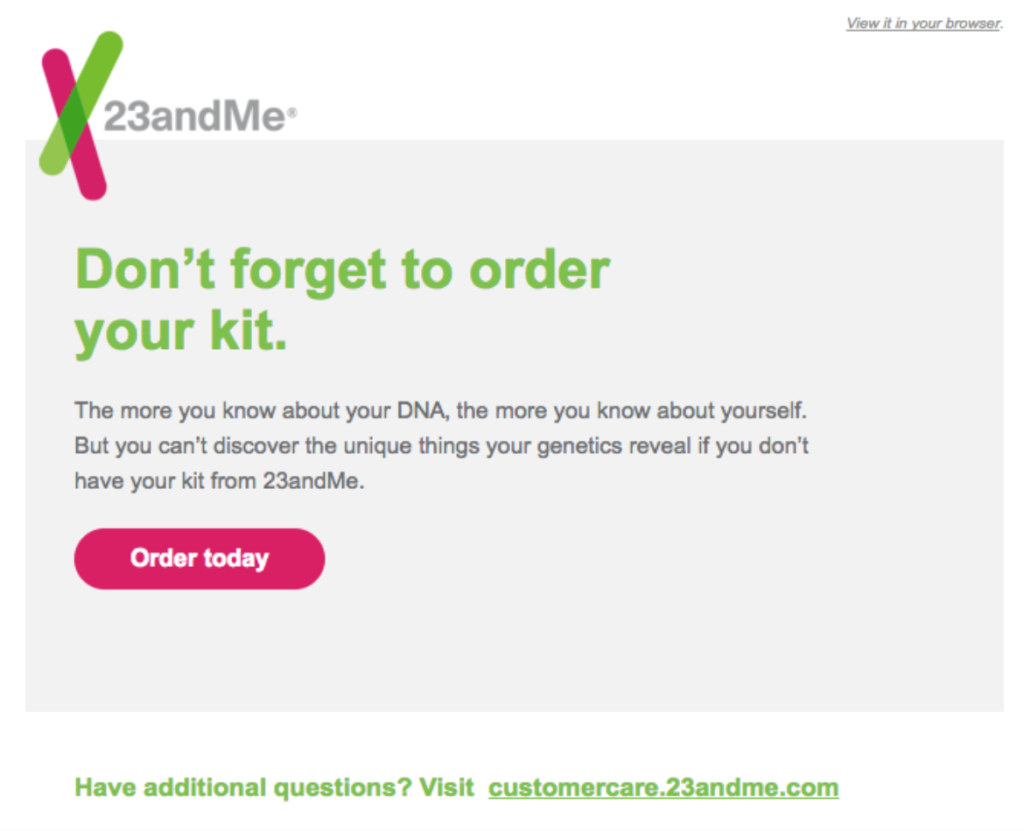
- Subject line: Your DNA kit is waiting for you
This email from 23andMe gets right to the point from the minute they see the subject line (because isn’t that the point?). They put the product name in the email subject line so the shopper knows exactly what the email is about and what they browsed.
In the email body, the company explains why the person needs the kit and gives them a simple CTA to click to go back to the product.
7. ASICS
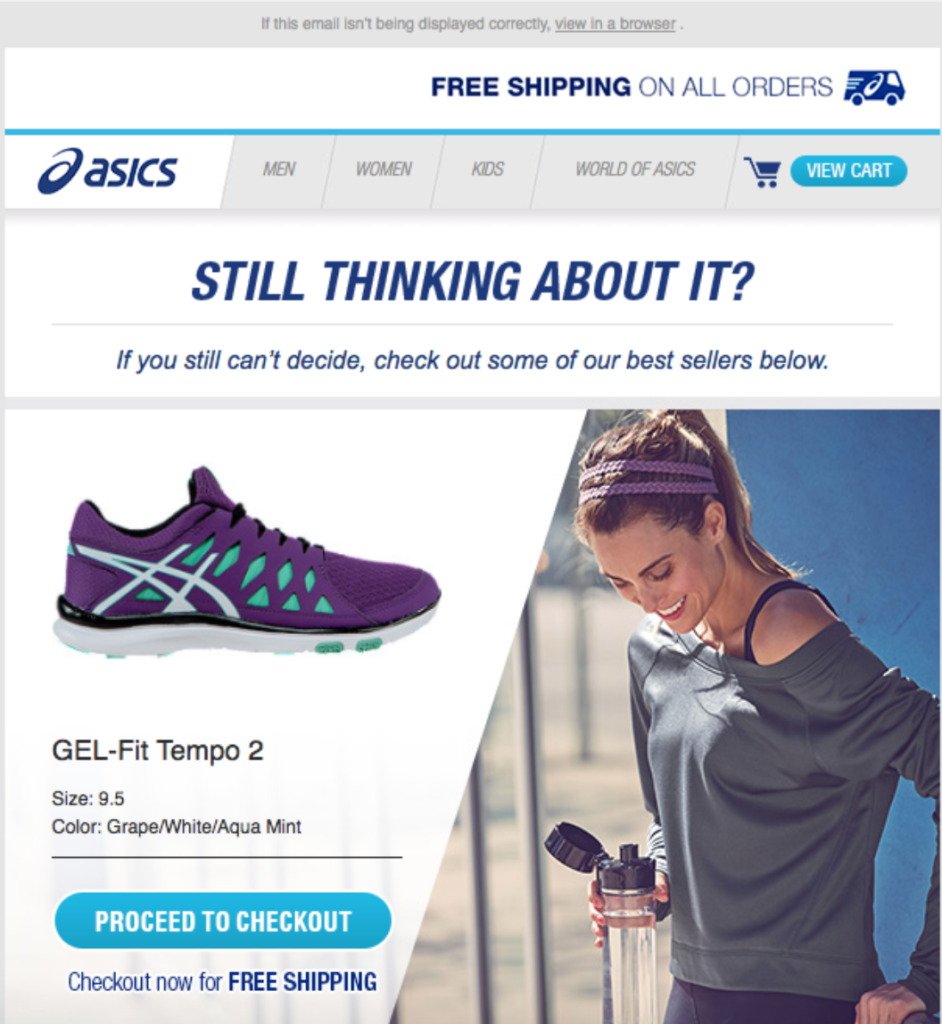
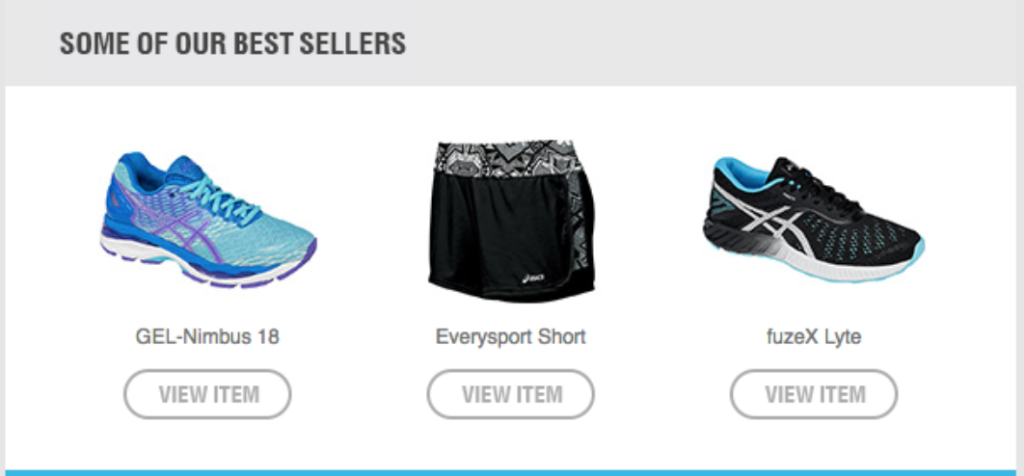
- Subject line: Don’t get left in the dust
We’re getting some serious FOMO vibes from this ASICS subject line. Once viewers open the email, they’re shown the main product they viewed, along with other popular options they might be interested in. It’s a classic approach that works, which is why so many brands use it.
You’ll notice that in addition to showing other shoes, the brand also includes a pair of shorts. Those might not be in the same category as shoes, but they go together and could be a great up-sell item. So, see which products and categories pair well together to determine if there are ways to incorporate this tactic in your emails.
8. Worx
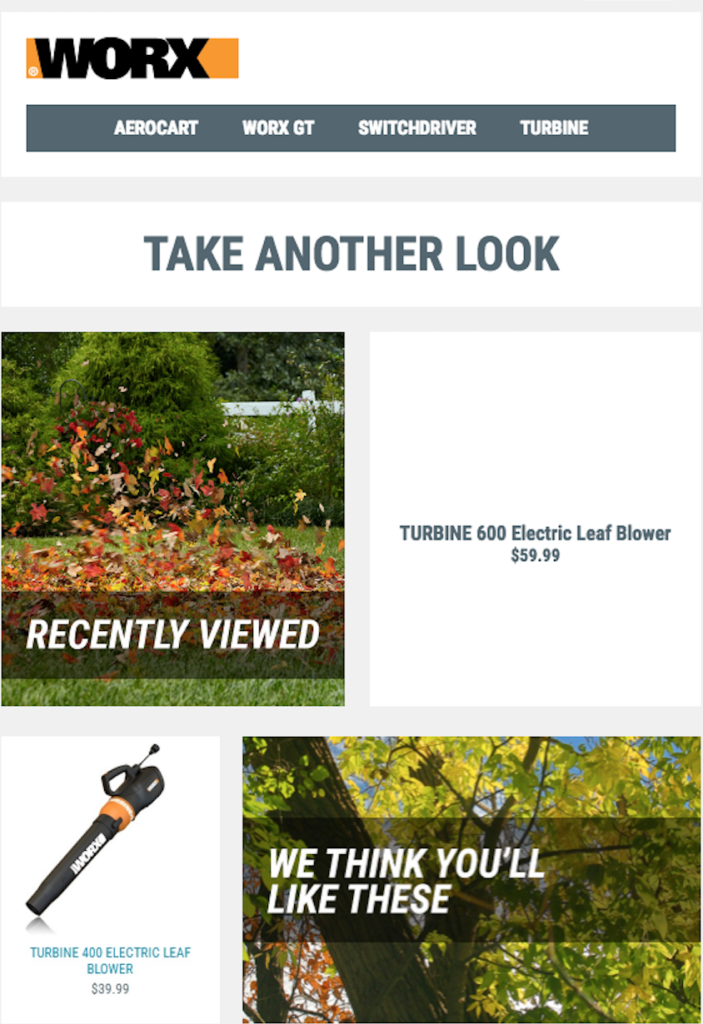
- Subject line: Take another look
We like the use of the text on the images in this Worx email, along with the header, “Take another look.” It’s simple, eye-catching, and gets the job done.
In addition to the product the shopper viewed, the email also includes “we think you’ll like these” products, too. As you can probably tell, showing related products is a popular technique with browse abandonment emails.
9. PacSun

- Subject line: We want you back
Also popular for re-engagement campaigns, this subject line works for browse abandonment examples, as well. PacSun’s email goes with a simple email header — “Still interested?” — followed by showing the product image, description, original price, the markdown price, and a CTA to “Buy now.”
The email also includes a menu bar if the subscriber wants to check out any of their other products or categories.
10. Bonobos

- Subject line: Everything cool with your transaction?
Who said email marketing had to be boring? (Not us, that’s for sure!) Bonobos gives their shoppers something to smile at to get them back to their website. I mean, who doesn’t love seeing someone in a chicken costume?
Getting distracted is a major cause of both cart and browse abandonment, so use that in your campaign. The reader might think, “Oh yea, I did forget about that product. I’ll go check it out now.”
You aren’t confined to only including product photos in these emails, so get creative!
11. Dot & Bo

- Subject line: Psst...You left something behind!
Create some urgency with your campaign, like in this browse abandonment example from Dot & Bo. This email has it all. From telling them the item is still available and showing the markdown to giving them other recommended products, it’s a shopper’s dream come true. OK, that might be taking it a bit far, but this example does give the consumer plenty of reasons to head back to their site — and that’s what you’re after.
Below all of that marketing goodness, the email also includes the brand’s most recent sale collections. Sure, that category might not be related to the one they originally viewed. However, it’s timely and shows them how they can find discounted items. We haven’t seen this type of approach in many browse abandonment emails, but we love it.
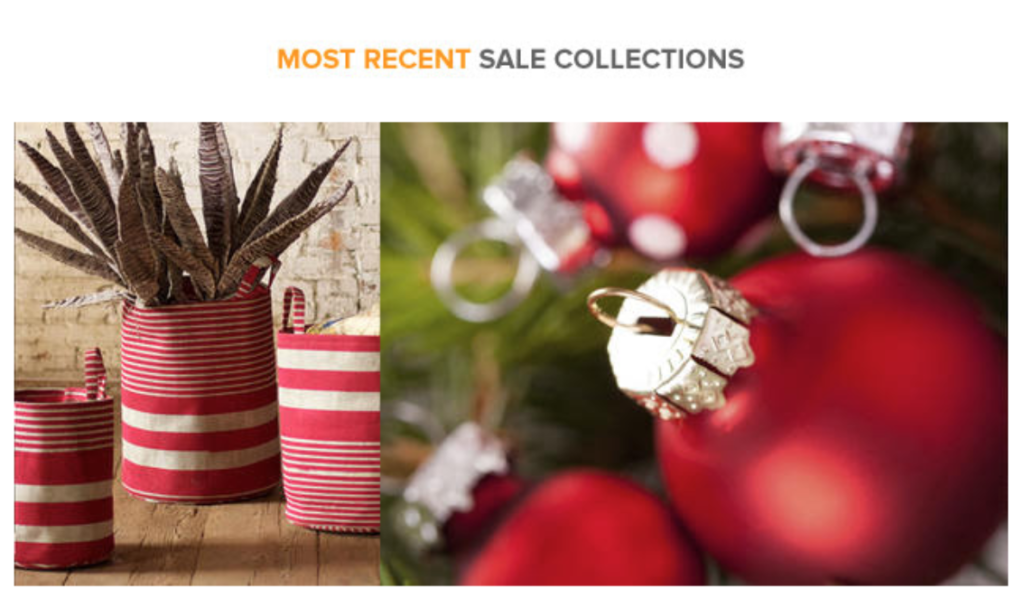
Start engaging browse abandonment visitors
Before you create and send automated emails to these delinquents — uh, I mean browse abandonment visitors — you need to first know who they are and what products or categories they’ve viewed. That’s where Retention.com can help.
We identify up to 35 percent of your anonymous traffic, so you’re able to collect email addresses for people who aren’t on your lists. Using our integrations with dozens of ESPs, those emails will trigger your automated browse abandonment email campaign. Pretty sweet email-based retargeting, eh?
Once you create your email campaigns, automation journey, and how you’re going to collect their email addresses and pages viewed, you’re off to the races to bring back those browse abandonment visitors. See how you can incorporate the ideas from these browse abandonment examples into your next campaign!
Ready to learn more?
Ready to start enjoying all of the benefits that come from email marketing? We’ve put together an extensive guide to walk you through the entire process, all the way from collecting contacts to hitting send.
What is email marketing?
Email marketing is a digital strategy where you send emails to leads and customers to build a relationship with them.
The thing that makes it so special is that it’s one of the only channels customers ask to receive. Email marketing allows your brand to keep customers informed, while customizing your marketing messages. It’s one of the most cost-effective and conversion-rich forms of marketing: For every dollar you spend on email marketing, you can expect an average return on investment (ROI) of $42. So, it’s no wonder so many are boasting its benefits.
To help you get started with email marketing, we’ve put together the ultimate guide on everything you need to know.
Here’s what we'll cover
Table of Contents
- Why is email marketing important?
- How to get started with email marketing
- Top email marketing services
- Importing contact lists
- Create an email opt-in form
- Grow customer lists
- Ways to segment contacts
- Create compelling content
- Effective email marketing designs
- When to send campaigns
- Keep emails out of spam
- Improve email open rates
- How and when to use automation
- Before you hit send
- Frequently Asked Questions
After reading this guide, you’ll know how to successfully send an email marketing campaign, grow your customer email list, create the best email content for marketing, optimize your campaigns, and start seeing a major ROI for your efforts. Let’s get started!

Why is email marketing important?
We’ve already covered how email marketing is a great way to reach your audience, but now let’s dive even deeper into why this form of marketing is so important. Because if you’re going to be spending precious time creating and scheduling an email campaign, it better be worth it, right?
Here are just a few of the reasons why companies use email marketing on the nearly 4 billion active email users around the world.
- Increases customer retention and loyalty
- Builds brand awareness
- Strengthens relationship with current customers
- Nurtures leads
- Allows brand to upsell services or products
- Educates customers on how to best use services/products
- Helps secure company’s spot as a thought leader
- Has a low cost to reach a large audience
- Gives you complete control over the email marketing communication
- Easy to measure results
- Results in higher ROI
People who buy products marketed through email also spend more than those who don’t receive email offers — and that ROI is three times more than what you’ll find on social media. Now that you see it’s more a question of “how” than “if” you should get started with email marketing, we’ll break it all down for you.
How to get started with email marketing

Creating an email marketing strategy doesn’t have to be difficult. Really, if you cover the basics, it shouldn’t be. An email strategy includes several moving pieces, but once you understand how they work together, it’s smooth sailing.
The first thing you should do is create measurable, long-term goals. Those objectives could be things like increasing the number of subscribers by a certain percentage by the end of the year or increasing ROI from promotional campaigns. The important thing is to set goals with real numbers and deadlines that are attainable, yet still push you to be better.

Once you understand what you’re trying to achieve with your campaigns, figure out who you want to target with them. You need to know who your audience is so you can provide campaigns that meet their needs and preferences. While your target audience obviously includes your target customers, it should also include people like influencers and company staff who may influence your target customers’ decisions.
Your brand’s goal and target audience are the foundation for everything else you’ll do with your email marketing efforts. Make sure you have a firm grasp on those two things, and then you can move on to finding the right tools to make them possible.
Top email marketing services
Before you can start sending campaigns and enjoying the benefits of email marketing, you’ll need to pick an email marketing service to use. There are plenty of options available online, and most of them have some sort of free plan you can use to test out the features before you commit to them. Here are five of the best online email marketing services to check out.
Mailchimp
MailChimp is one of the leading email marketing platforms and is known for its easy-to-use interface — perfect for beginners wanting to send newsletters and automated messages with little to no learning curve.
Robly
Robly is known for its OpenGen technology, which resends your email campaign within 10 days after the initial send (with a different subject line) to your subscribers who didn’t open it the first time.

Drip
The purpose of marketing automation is to, well, automate things — and that’s something Drip heavily focuses on. They have 18 triggers and 16 actions in their automation rule builder, which covers things like moving subscribers in and out of campaigns and synching their details to another application, such as your CRM.
Infusionsoft
For small businesses looking to combine a variety of different tools into one solution, Infusionsoft is worth taking a look at. It allows you to capture leads, manage your e-commerce sales, create email newsletters and, oh yeah, handle your marketing automation too.
Autopilot
Using a whiteboard-like layout, you can create multi-channel messaging journeys in Autopilot’s canvas — all before publishing it and watching the live results. Autopilot also allows you to connect apps, forms, and sites to automate your email marketing and communication tasks.
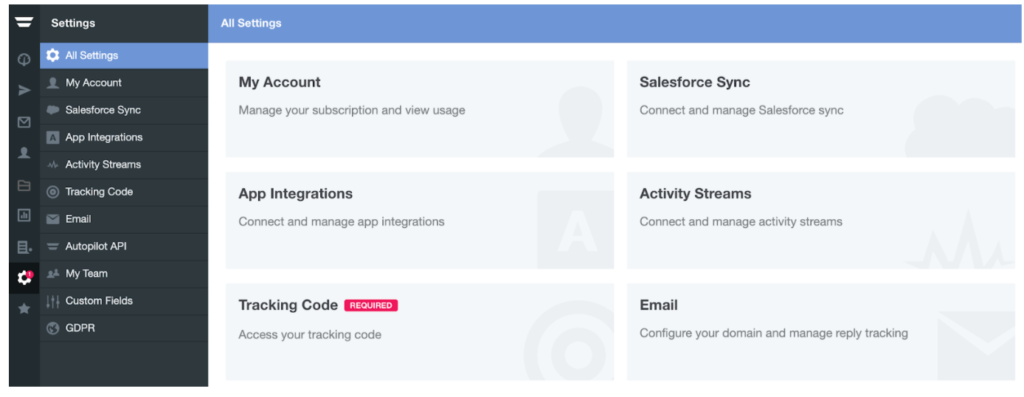
Note: It helps to know your email marketing needs before looking for a service. That way, you can see which one checks off all or most of your list.
Import a list of known contacts
If you have any existing email addresses for customers or leads, you can import those to start building your email list. How you can import those will depend on which email service provider you go with.
Generally, you can either manually upload an existing list from an Excel file, for example. Or, you can connect your email service account to the tool where your customer data lives — like your CRM, accounting, eCommerce tool, or others. Before you import any contacts, ensure you have adequate permission to email these subscribers. These existing contacts are a great starting point for your new email marketing strategy.
How to create an email opt-in form

If you don’t already have email addresses to import — or you’re ready to start growing your list — you can craft an eye-catching opt-in form to start collecting email addresses. An opt-in form is your tool to gather addresses. It’s the “Subscribe Here” box you’ve seen on sites plenty of times.
Email addresses are the lifeline of your email marketing strategy, and the better qualified they are, the better the engagement will be. The purpose of your opt-in form is to make website visitors want to subscribe to your newsletter. To make sure your opt-in form converts, it should include certain components:
- Enticing headline
- Clear description
- Eye-catching visuals
- Simple form
- Subscribe button that pops
After you create the design and text for your opt-in form, it’s time to choose where to put it on your site. Here are a few placement options:
- Floating bar
- Splash page
- Welcome gate
- Header
- Inside your blog post
- Sidebar
- Blog archive page
- Timed lightbox popup
- Scroll box
- Footer
- Resources page
- Exit-intent popup
- Designated sign-up page
Then, you need to choose whether you want it to be a single or double opt-in. That just means whether or not you want your subscriber to confirm they opted in or not.
Opt-in options
With a single opt-in, subscribers only have to fill out your sign up form and click submit. They immediately receive your campaigns and are now a subscriber.
A double opt-in means a subscriber clicks submit and then has to wait for an email confirmation. Once they receive that email, they click on the link to confirm their subscription. Here’s an example of a double opt-in:

So which one is better? It depends on what you’re trying to achieve. A single opt-in will have a higher conversion rate because there are fewer obstacles to join your list. However, a double opt-in list will be more engaged. These contacts typically will have higher open and click-through rates — and have half as many unsubscribes as a single opt-in list. So, sending the confirmation email with the double opt-in helps increase the quality of the contacts, meaning a higher chance of generating sales during time.
One note
If you serve EU-based clients, be sure you understand and comply with the General Data Protection Regulation (GDPR). Do not use pre-ticked boxes, and include unsubscribe options in all of your emails.
It’s up to your company to decide whether or not it will send emails to addresses that haven’t opted in. In the United States, it’s not illegal to send to an address that hasn’t opted in, as long as you include an opt-out link in your email. (However, it is illegal in Europe and Canada.)
Some organizations have decided they’ll only send opt-in emails. Others don’t care if they got an explicit first-party opt-in or not, so long as the engagement is good and it doesn’t adversely impact their deliverability or their brand. Some are specific about the types of emails they will send to people who don’t opt-in explicitly. Others will only send cart abandonment emails to people without an opt-in, but they won’t send an unsolicited newsletter unless the person asked for it.
So, it’s up to your brand to decide what’s best. The most important thing is that your emails earn engagement, whether it’s from an opt-in list or not. If you send emails that have high open rates, high click-throughs, low unsubscribes, and low complaints, you will see your deliverability (meaning your ability to hit the inbox) improve. A highly engaged, non-opt-in list is better for you in the long run than a low-engagement, opt-in list.
Here’s more on if you can send an email without an opt-in:
https://www.youtube.com/watch?v=E6AtUsP8o8M&feature=emb_title
How to grow your customer email list
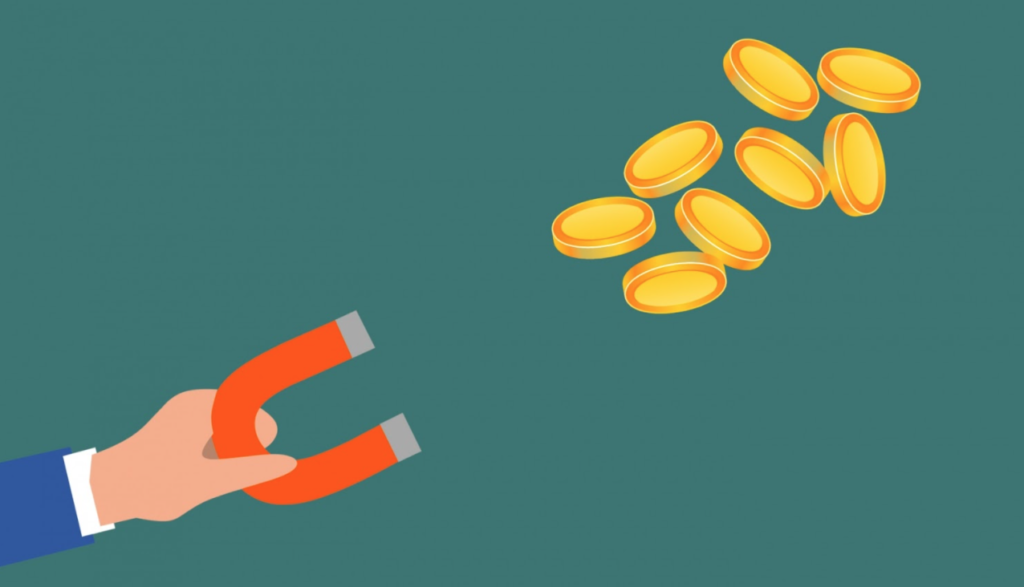
Simply adding your “Subscribe” button to your website normally isn’t enough of a reason for people to fill in their information. Most people aren’t going to want to give you their email address if they aren’t getting something in return. You need to give them a compelling reason or offer to attract them — like a lead magnet.
A lead magnet, also known as an opt-in bribe, is something valuable you give away for free in exchange for someone's email address. You’ve seen these on various sites. The brand will offer you some sort of premium content if you give them your info.
Lead magnets can come in many different digital forms, such as a PDF, audio file, MP3, video, or other file format. It doesn’t matter what type of file it is as long as it’s free for the visitor. Their only payment, if you’d like to call it that, is providing you with their email address — which, as you know by now, is very valuable.
Here are a few popular types of lead magnets you can use to collect their addresses:
- Whitepaper
- Case study
- eBook
- Cheat sheet of tips
- Free trial
- Webinar
- Free course
- Toolkit of digital tools, plugins, or themes
- Access to a private community
- Quiz or self-assessment
- Coupon
- Free consultation or quote
The possibilities are as endless as your imagination. Just make sure that the lead magnet is something your targeted audience will find valuable. You can place the magnet offer in pop-up windows on blogs or in the sidebar of your site.
Improve your chances of collecting email addresses by pairing the lead magnet with a relevant topic. For example, offer a downloadable tip sheet lead magnet on “How to grow your Instagram followers” on a blog about social media best practices — similar to this example. You know people reading it will find that useful, which makes it more valuable to them.
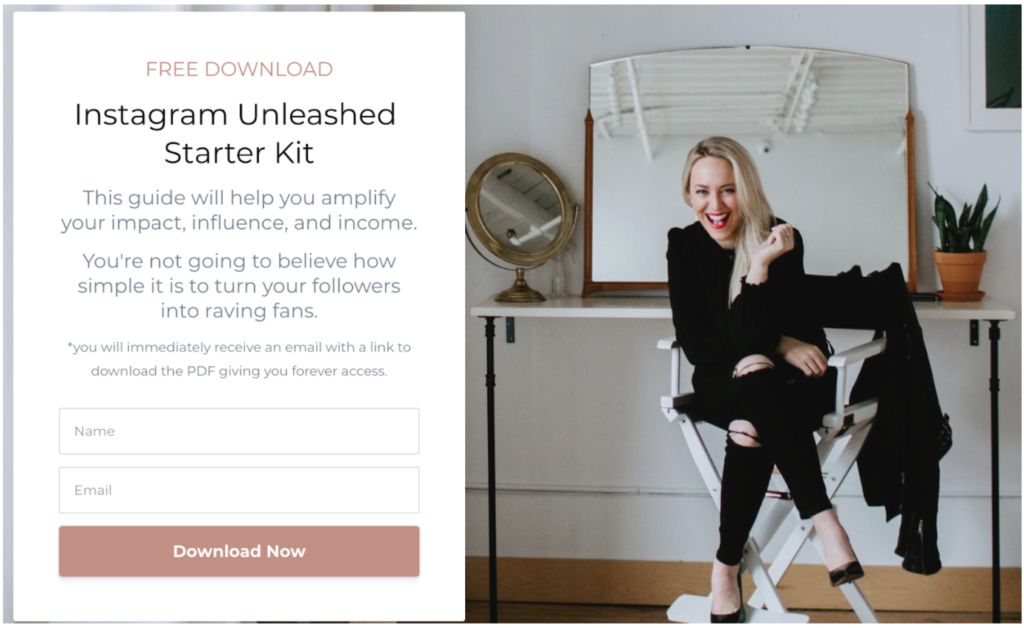
Keep it clean
Congrats! Your list is growing by leaps and bounds at this point if you’ve imported old lists and incorporated lead magnets. Isn’t it an amazing feeling? Now, you need to focus on keeping your list as clean as possible so that you keep your engagement metrics high. What that means is that you don’t want email addresses on your lists that aren’t interacting with you. Obviously, your emails aren’t helping the subscriber if they aren’t opening them, and the inactive addresses are only pulling down your metrics.
To keep your lists fresh, it’s good practice to remove unengaged subscribers every so often. An inactive subscriber could be anyone who has not engaged with any of your emails in the past six months or more, for example.
Before you make any cuts, you can try one more time to reach them by sending a re-engage campaign. We’re sure you’ve seen these before. They have subject lines like:
- “We want you back”
- “Do I bore you?”
This is your last-ditch-effort to see if you can get them to open your email. Sometimes people will, and sometimes they won’t.
Another option is to check in with your inactive subscribers and ask them if they’d like to update their information and preferences. That way, they’re reminded they are on your list, and it gives them control over how they want to engage with your brand.
If none of that works, it’s time to let them go. We know it can be difficult to remove a contact you worked so hard to add to your list, but we promise, it’s for the best.
Email list segmentation
No two people are exactly alike, so why would you group them together in one massive list? The answer is “you wouldn’t.” That’s where segmentation comes in. You can segment your contacts into different lists so that you can send them targeted content based on their customer profiles. And it’s easy to see why so many are using this technique: Marketers who segment their campaigns have seen as much as a 760-percent increase in revenue.
For example, if your customer has purchased children’s clothing from your brand before, they would probably enjoy a blog on “Top summer activities for kids” or “Toddler naptime basics.” An article like that wouldn’t be useful for someone who doesn’t have children, which is why segmenting your lists is so important.
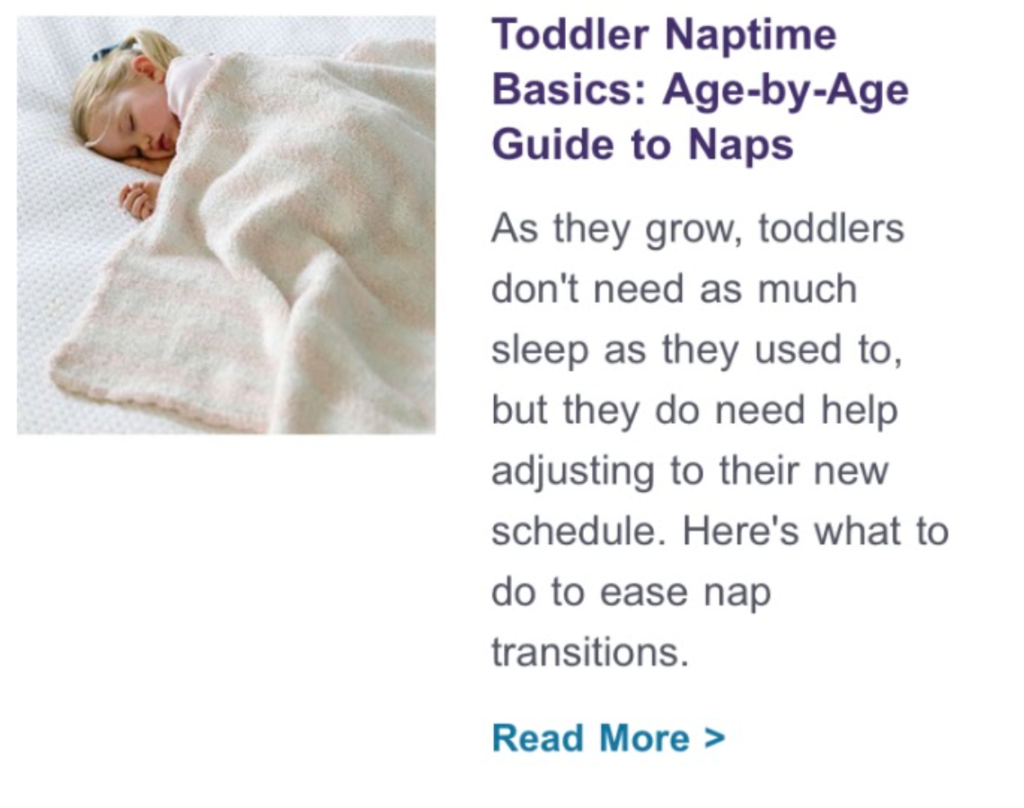
You can gather data about your audience from website analytics, polls, surveys, predictive technology (AI), previous email experiences, social media analytics, or other engagement points. If you really want to know what they’re interested in, give them the power to choose which lists they’re added to as part of your email signup process. They can check the boxes next to all of the lists they want to join (ex. daily newsletter, deals, blog posts, etc.).
Here’s a breakdown of some of the top ways marketers segment their lists:
Demographics: Age, gender, education, location, income, employment, cultural affiliation
Behaviors: Buying history, search history, online engagement, social media preferences, interests, referral method
Segmentation best practices
Your segments can be as simple or in-depth as you want. But when you’re first starting out, it’s best to keep them simple. Start with two or three clear-cut groups and then track the data, test your methods, and consider adding additional groups or layers to your plan.
The whole point of creating segments is to provide your audience with personalized content so they feel like what you’re sending was made just for them. And to help you do that, you’ll need to collect and incorporate what you learn from the data.
Make sure you follow where the data takes you. If your analytics show the highest engagement comes from 30-to 40-year-old women, one of your target segments should be geared toward 30-to 40-year old women. Likewise, if your data is showing more activity in Canada than Mexico, make a specific segment for Canada and target their cultural interests and relevant topics. If you’re not sure who your target audience is, take a step back and start with buyer personas.
The only way to perfect your segments is to put them to the test. Start with simple segments like locations and run some test campaigns. Try two different campaigns both geared specifically toward people in Texas, for example, and see which campaign does better. Then, use those analytics to create sub-segments to better personalize the customer experience.
Create compelling content
Coming up with engaging content on a regular basis can seem overwhelming. One way to get a better grasp of the content is to start by figuring out what kind of message you have to share. (Because, there should always be a reason for sending your subscribers an email — not just because you need to hit your quota for the week.)
There are six basic types of email marketing content you can send to your subscribers:
- Announcements: Does your company have some exciting news or information to share? Send them an announcement, and let them know.
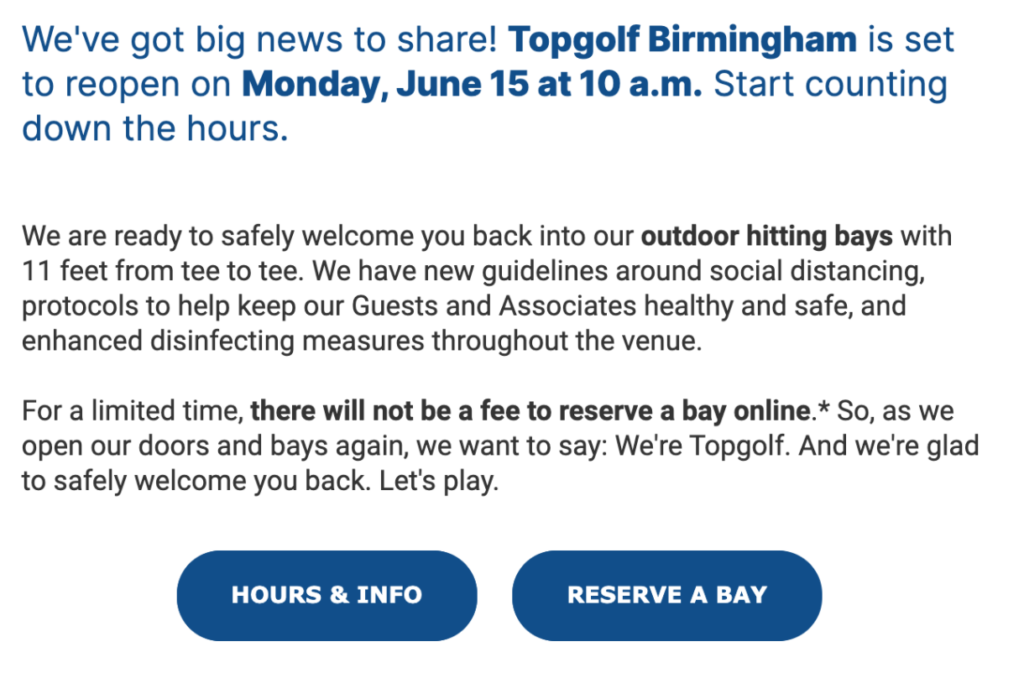
- Marketing offers: Everyone loves a good deal, which is what makes this type so popular.
- Newsletters: These can be sent out daily, weekly, or monthly and feature content like what’s new on your blog.
- Event invitations: Let them know if you have a local or online event coming up.
- Transactional: This can include welcome, confirmation, and follow-up emails.
- Lead-nurturing: There are five stages in the buyer’s journey — awareness, consideration, evaluation, purchase, and post-purchase. You can deliver emails that match where they are in their journey.
Your email marketing strategy should include a mix of these content types over time so that you aren’t sending them the same kind of email each time. Give them a taste of different types of content to keep interested in reading your next message.
Take content to the next level
You should also treat your subscribers like the VIPs they are. Your subscribers are so interested in what you have to say that they’re willing to invite you into their inbox. Don’t take that for granted. Show them you appreciate them by letting them be the first to know about new products and sales.
Your content should also be useful and provide value to your customers. If you’re not sure if the email will be of use to them, think about the types of messages you get in your inbox. Which ones do you delete, and which ones do you read and enjoy? Then, think about the email you’re sending to your subscribers and if it fits in the group with the ones you’d actually want in your inbox. Emails with how-to articles, videos, and other informational pieces are good options, as long as the topic relates to the subscriber.
Tease them
While useful content has a way of being longer, you don’t have to cram it all into your email message. Actually, it’s best that you don’t. Provide your reader with enough information in the email to hook them, and then include a “Read More” link to your website with the complete text. You only have a few seconds to catch their attention, and you don’t want a long, text-filled email to scare them away. Plus, that gives them a reason to click-through.
Even if your company covers the most boring topic known to mankind, your email content better not sound like it. So, make sure your content doesn’t sound like a textbook. Add in your brand’s voice, personality, and sense of humor (if that’s in line with your branding) so they know exactly whose email they are reading. That will remind them why they signed up for your emails in the first place. Your email should sound like you’re talking to someone, so when in doubt, try reading it out loud and see how it sounds.
Here are some content examples that do and don’t work to help you figure out what type of content to send:
https://www.youtube.com/watch?v=KKZKqOAzsJE
Add a personal touch
No one wants to feel like just another name on your email list. That’s why it’s so important to personalize your email campaigns. From the content topics to adding their name, there are several ways you can make them feel like you wrote the email just for them.
Most email marketing service providers will have some sort of format they use for adding in a contact’s name. For example, if you put “Hi [FNAME]!” it will pull in their name, showing up for them as “Hi John!” That beats a “To whom it may concern” any day.
You can also remind them why you’re sending them a certain piece of content. Tell them you chose this content because they liked another similar article. Or, they viewed a product on your site, and this one is similar. The goal is to tailor your message as much as humanly possible (without sounding creepy) to each subscriber.
Here are some more ideas for what you can send:
https://www.youtube.com/watch?v=W_tPhVVRNkU
How to create an effective email marketing design
Whether you’re an HTML master or you don’t even know what those letters stand for, there are ways you can create a stunning campaign design. Most email marketing services will give you a few options when it comes to building your design, including Text, HTML, and some sort of Drag-and-Drop designer tool with pre-designed templates. Your level of experience and preferences will help you choose the type of designer you’re most comfortable with using.
But no matter what type of design tool you decide to use for your campaign, there are a few components you’ll want to include in your design to get the most engagement.
Easy to read
For starters, the design should make your content easy to read and be appealing to the eyes. That means breaking up the text so that it isn’t one long chunk of black that makes their eyes glaze over. Keep the paragraphs to one or two sentences top, which also makes it easier for them to scan and figure out if it applies to them (which it should).
Speaking of the text, you should use a legible font that’s within the 14- to 16-pixel range that will be rendered across email clients. Your headline can be a larger font size and then move to a smaller size for the main meat of your message.
Add visuals
Break up your text with some interesting images. You can use original photos (highly recommended), stock images, or other graphics. Just remember to use the web-res version of the images so that your email size isn’t too large to load. Sites like Pixabay, Pexels, and Unsplash have plenty of free images you can download and use if you don’t have many in-house options. Don’t be afraid to have fun with the images — and make the text part of the visual component — like in this example from InchBug:
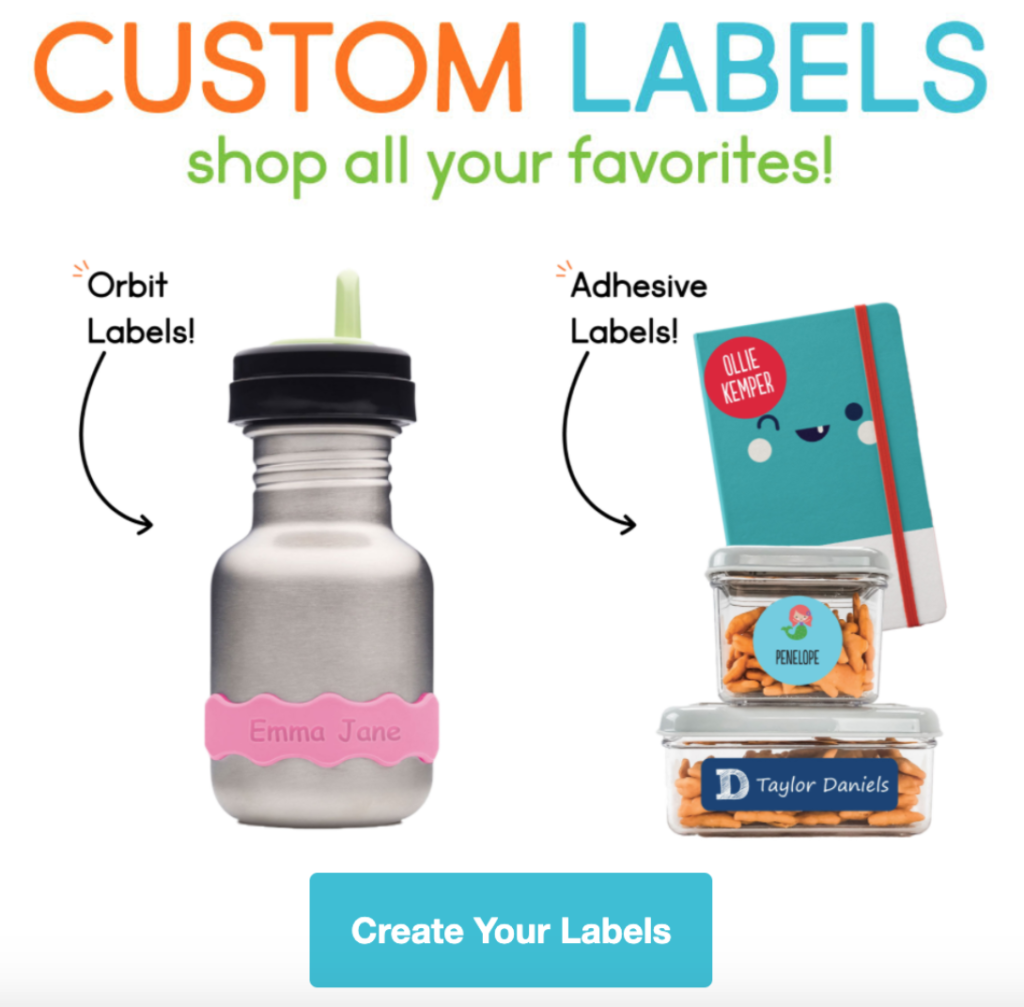
Button stands out
Make sure your call to action (CTA) stands out in the design by creating a colorful button for it. Your CTA is the next step you want readers to take — such as reading your blog, viewing a product, creating your label (like in the example above), or signing up for a consultation. So, it needs to be easy to spot.
Optimize for mobile
With more than half of users accessing their email from a mobile device, you can’t afford to miss out on that big chunk because your email isn’t responsive and optimized for mobile. Everything in your message should be easily loadable on a phone or tablet. Also, remember that most mobile devices are smaller, so take that into consideration when laying out your design.
Some other general pointers are to keep the formatting under 600 pixels wide, use a larger font, ensure images display correctly, keep CTA buttons on the larger side so they are easier to tap with a finger, and don’t place two links right next to each other.
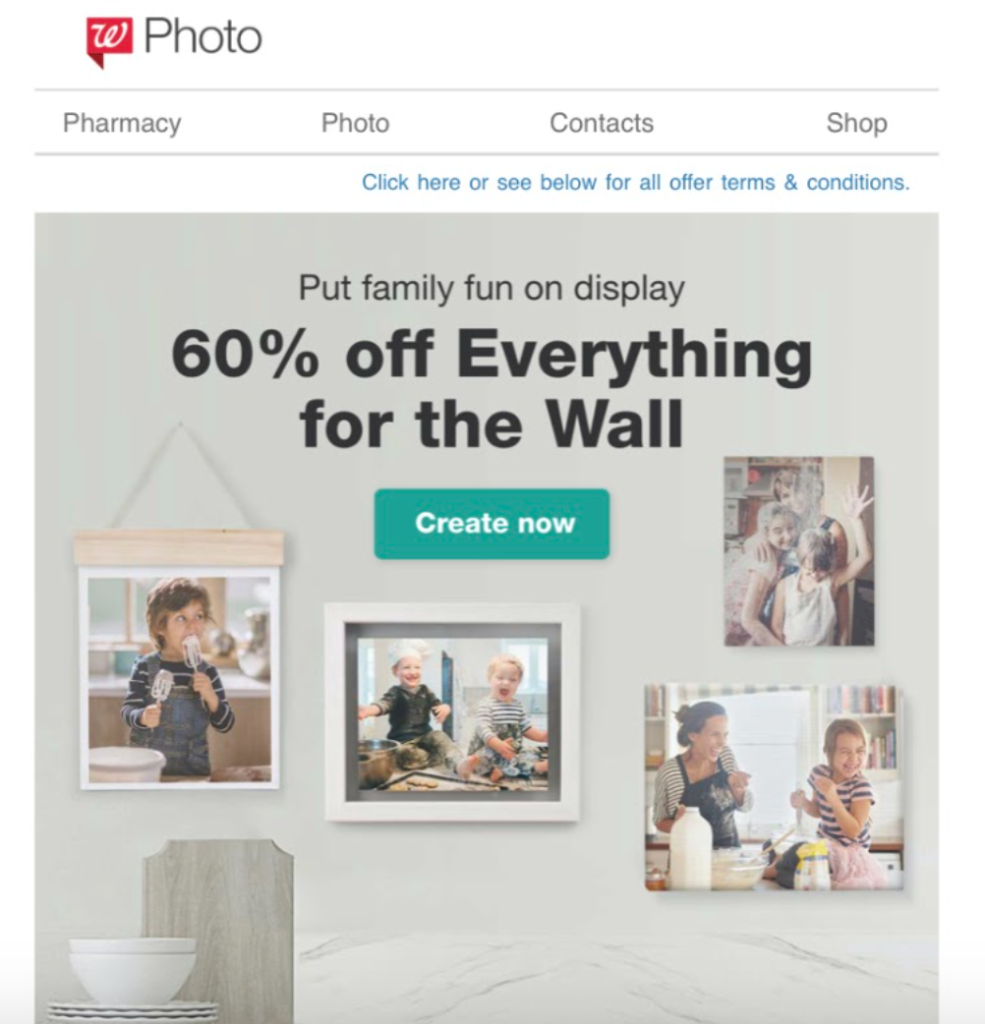
Set a send schedule

Decide how often you plan to send your email campaigns, and share that information with your audience. That will help your subscribers know what to expect — and keep them on the lookout for your next message — and also help you stay on track. Make sure your schedule is something you can consistently stick to so you can build trust with your readers.
You will be able to schedule your campaigns ahead of time using your email marketing service provider. Keeping an updated content calendar can ensure you’re staying on schedule and also providing a variety of content types. On your calendar, you could include the email topic, images/art needed, CTA, and type of content.
As for when to send your email, that depends on your industry. But to help you have a solid starting point, here are a few send trends from across different industries:
- Tuesday is the best day to send emails by far.
- If you send two emails a week, send your second one on Thursday.
- The best time of day to send emails is (starting with the best time) 10 a.m., 8 p.m., 2 p.m., and 6 a.m.
Pick one of those options, like Tuesday at 10 a.m., and see how your campaign performs. Then, hone in on the best time/day for your brand. You can use services like Google Analytics to get a better idea of when your subscribers are interacting with your brand.
How to stay out of the spam folder

No one wants their email campaign to end up in someone’s spam folder, especially after they put all of that work into creating it. Luckily, there are some simple ways you can avoid the dreaded “spam” word.
Don’t buy addresses
It might be tempting to purchase email addresses, but nine times out of 10, they aren’t worth anything. You’d rather have 100 subscribers who engage with your emails than 1,000 who don’t. And with Google, inorganic, deceptive methods of building engagement are punished.
Use opted-in subscribers
The best way to ensure your contacts actually want to receive your emails is by having them opt-in. A double opt-in is even better. Remember, it’s all about quality over quantity. Always gain permission from subscribers before sending emails for each new email campaign, even if they’re returning customers.
Let them unsubscribe
This is a requirement for email marketing services, so make sure you have an Unsubscribe button or link somewhere in your email. Most of the time, you’ll find this at the body of an email.

Welcome subscribers
By sending new subscribers a Welcome email, you’re reminding them that they signed up to be on your list. Be sure to send this email within 24 hours of them signing up — and the sooner you send it, the better.
Mind your metadata
Spam filters are always on the lookout for unsolicited emails and scams. Use the merge function to personalize your recipient list, and request that subscribers add you to their address book.
Send from a good IP address
A good IP address is one that hasn’t been used by someone else who has sent spam in the past.
Avoid spam words
Using too many sales-like or trigger words like “cash,” “clearance,” “buy,” “needy,” “sleazy,” and “cheap,” could land you in spam. Your email marketing platform should flag any words that are known to cause spam issues.
Follow-through
Don’t use deceptive subject lines. Provide whatever the subject line promises in the email body.
Share location
Put your company’s address in the bottom or the email. It shows your company doesn’t just live online.
Remember: Your email campaigns are an extension of your brand, so act with the same integrity you would with all customer interactions. You can increase the odds of your emails making it to the desired recipients by taking the above precautions.
Improve open rates
Staying out of their spam folders is great, but we know what you’re really after: open rates. You want to know that your subscribers have opened the message you crafted just for them.
A low open rate could mean a few things, but a good place to start is with your subject line. If your subject line isn’t compelling, subscribers will never click to open your email.
You can test different subject lines by using A/B testing with your campaigns — which simply means you send out different versions of the email to your list to see which one performs the best. That will show you which one performs the best so you can recreate that for future campaigns. Only test one component at a time (so the subject line in this case) so that you know which variable it was that had an effect on the open rate.
Here are some tips for improving your subject lines, which in return will boost your open rates.
Must-read subject lines
You can have the most amazing content on the planet. But, if your subject line stinks, no one will ever know. Your subject line should make subscribers want to read more. That can seem like a daunting task, which is why we put together some tips that will help you craft the next must-read subject line.
- Ask a question.
No matter your business, your ultimate goal is to solve your customers’ problems. Consider how you can address a specific issue and pose questions that you would want to be answered if you were receiving that message. Take this, for example:
Do you always wake up tired?
This simple question can pique a reader’s interest enough that they can’t help reading on to find out how the query fits into their own life. Just make sure that the body of your email provides the answer, or they’ll feel cheated.
- Be different.
That may seem difficult considering about 270 billion emails go out a day. But, you can still make sure your subject lines stand out from the crowd by giving it some personality. Maybe you add in some emojis, current lingo, a conversational tone, or use a fun play on words that doesn’t come across as cheesy.
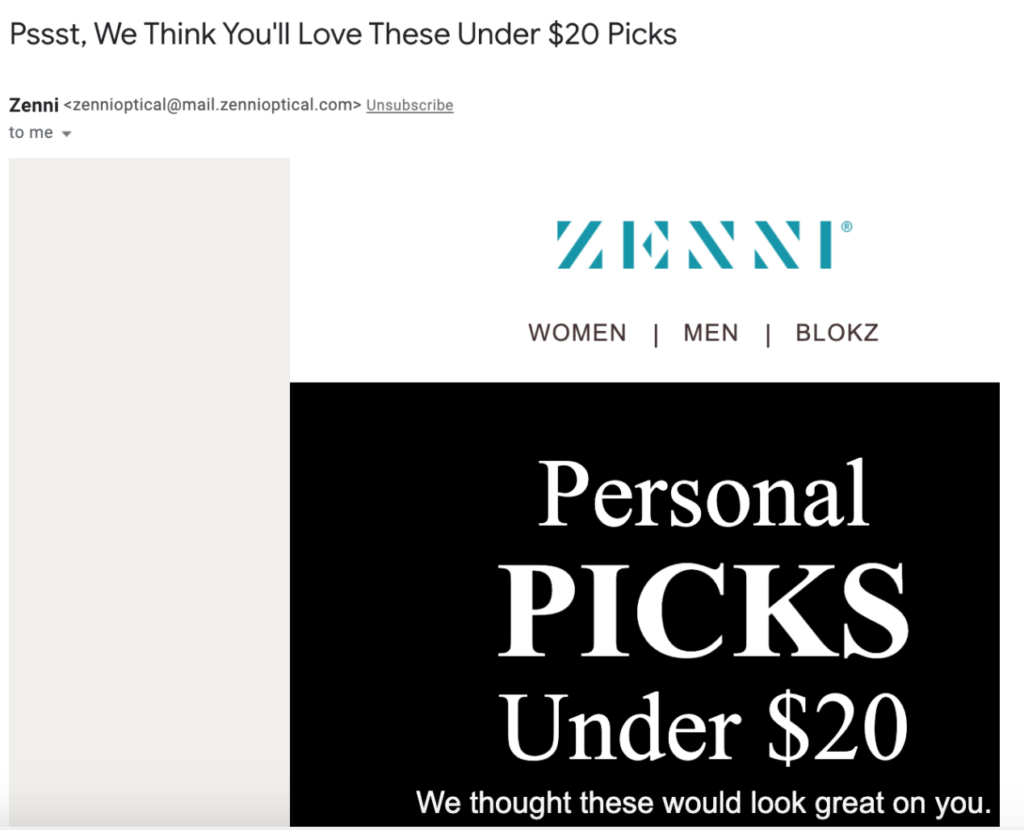
- Stay fresh.
You aren’t only competing with other brands for the best subject lines, but you’re also up against your own after a while. Make sure you don’t use the same format or style with every single one. That will keep readers from getting bored with your messages.
- Keep it short and sweet.
The email body is where the majority of your text should be found, so don’t feel like you have to explain everything in your subject line. Actually, the longer the subject line, the lower your open rate is going to be. Here’s a good and bad example of subject line lengths:
Good: Don’t forget your free download!
Bad: Your free download is still available, so don’t forget about it!
- Get personal
Your email isn’t the only aspect of your marketing campaign that you can personalize. You can also add their name into the subject line to catch their attention. Many automated mailing systems even offer built-in personalization capabilities that add a more intimate touch no matter how big your subscriber list. Also, avoid using terms like “subscribers” or “lists” when interacting with customers.
- Create curiosity.
Make them curious enough that they want to open the email, but don’t be so cryptic that they aren’t sure what you’re talking about.
- Add numbers.
Just like with blogs and other articles, there’s just something about numbers that draw us in.
5 must-read summer books
10 things parents say every day
Here are other tips on writing great subject lines that are sure to earn you an open:
https://www.youtube.com/watch?v=5py5PLLB-3o
How do you stack up?
It’s hard to know if your campaigns are performing well, especially in the beginning, if you don’t have anything to go off of. While metrics vary from industry to industry and business and business, here are the average rates for all industries (rounded up to the nearest decimal):
- Open rate: 14 percent
- Click-through rate: 7 percent
- Bounce rate: 9 percent
- Unsubscribe rate: 0.01 percent
Not sure which email metrics you should be looking at? Check out this video:
https://www.youtube.com/watch?v=q5Q5HM87-_s
Autoresponders
Now that you’ve learned how to grow, segment, and effectively reach your email list, it’s time to talk about how you can automate the process. That’s right: You can turn on your little money-making machine and let it do its thing with automated emails.
Autoresponders are a sequence of emails that are automatically sent to your subscribers. They are sent to people on your email list after that person does something to trigger the send. For example, an autoresponder can be triggered by events like joining a list, abandoning their cart, downloading an ebook, making a purchase, or specific browsing behavior.
Type of content
The autoresponder’s content is something you create in advance and set up to go out after they make the set action, with help from your email marketing software. For example, you would create an email that would go out to anyone who purchases your dog food to let them know you also have dog treats.
Not only do autoresponders take some of the work off of you, but they are also a great tool for nurturing leads and turning prospective leads into customers. This type of email provides the reader with valuable information because it’s based on one (or more) of their actions.
You can make your autoresponder sequence — which is basically a series of causes and effects — as simple or complex as you want. These series, often referred to as journeys, let you set what happens when a person makes a certain action. You can also set conditions based around these actions, like if they are/aren’t on a list or have/don’t have a tag. Here’s an example of what an autoresponder journey looks like.

How to use them
You can set whatever type of goal you want with an autoresponder, but here are some of the most popular options. You can choose one (or a combination) of these goals for your series:
- Welcome sequence. After someone signs up for your email list, it only makes sense to send them a “Welcome” email, which is something you can set as an autoresponder. This email could include links to your lead magnet(s), a “thank you” for subscribing, or a CTA for your most popular blogs that would apply to someone just joining your list.
- Lead magnet. Who says different components of email marketing can’t work together perfectly? If you have a lead magnet for a free course, for example, you could set up an autoresponder that delivers a series of emails containing the course lessons during a specific time frame (every few days or weeks). A course like this has a high level of perceived value, so make it work for you.
- Upsell products. Promoting similar products to the ones they’ve already purchased is a great use of an autoresponder. Depending on your products or services, you could offer them an upsell or cross-sell to a related product or service. So, if they purchased a computer from you, you could then offer them a computer bag, software, or protection plan they could add to their order before it ships. If you sell products that people buy frequently (like food or disposable items), you can automatically send them offers for new items when you know they’re about to be ready for another order.
- Sales funnel. Using autoresponders as a way to push leads through the buyer’s journey (or sales funnel) is nothing new. If your journey includes the awareness, consideration, and decision stages, you’ll want content that fits into each. Once they engage with content at one stage, they can move on through the rest of the stages via autoresponders. For example, you could start by sending them educational articles, videos, and how-to pieces. Once they’ve read those, invite them to a webinar where you describe different purchasing options and which might be right for them. And if they’re still moving forward, send them content where you include an offer to your service or product.
Map out your email sequence
Once you’ve figured out what you want to use your email autoresponder for, you can start to draft out the specific sequence and how long you want it to be (ex. how many days and how many emails).
There’s no set rule for how many emails you need to include in your email sequence. It just needs to be long enough so that you can reach your goal. So, the length for your autoresponder will be based on its purpose, your segments, subscribers’ preferences, and other specific factors.
After you know how many emails you want to use, you can start figuring out how you want to space them out. It’s OK to send an email once every two days for educational emails — and several in a single day when you’re running a huge sale that’s about to end.
It’s all about finding a healthy balance between your sales and “value” emails. A good way to go about it is to follow the 80/20 rule. That means 80 percent of your emails should provide value, while 20 percent are about making a sale.
Next, create an outline for your email sequence, either by typing it out or putting it directly in your email marketing platform. You’ll want to include what topics each email will cover and what CTA will be included. With an outline in place, you can begin to create the campaigns that will be a part of the autoresponder series.
Review, test, and send campaign
There’s nothing worse than hitting “Send” on your email campaign, only for it to go out with a mistake to hundreds or thousands of subscribers. Typos, broken links, and distorted images are a good way for your email to end up in the Trash folder. Or worse, they could unsubscribe from your list because it makes your brand seem unprofessional.
The best way to avoid all of that is to edit and review your email marketing campaign before it goes out to the masses. So whether it’s a single email campaign or an autoresponder series, you need to make sure everything looks good and works before you schedule or send it out.
Read (and then reread) the subject line, from name, preview text, headline, body text, footer, CTA, and any other text that’s in the email. If that all checks out, look over the design to make sure it’s clean and gets your message across (without taking away from it).
When everything looks good from within your email marketing platform, send a test email to yourself and a friend or coworker. Make sure you view the test email on your desktop and mobile device to ensure it works on them both. If everything still looks great, check to see if your email service has flagged anything that might land your message in spam. And when it gives you the go-ahead, you’re good to go.
Now it’s time to hit Send and start tracking your email campaign!
Frequently asked questions
We’ve covered some of this information already, but here’s a quick list of some of the top questions we hear from people.
Are there free email marketing templates available?
Yep. Most email marketing services will provide you with free design templates — anywhere from a handful of templates to dozens. So, all you’ll have to do is plug in your information, and you’re good to go.
How do you create a successful email marketing campaign?
Here’s a rundown of what you can do to make your campaign more successful:
- Set email marketing goals
- Create a targeted email list
- Know email types (ex. newsletters, promotional, etc.)
- Understand your audience
- Choose an email marketing service that meets your needs
- Build eye-catching opt-ins
- Craft engaging content
- Make sure your subject line wins them over
- Send follow-up emails based on their initial interaction (or lack thereof)
- Create a design that shows off your brand and message
- Edit your email, and send yourself (and someone else) a test email
- Track your email metrics
- Figure out what worked so you can recreate that for your next campaign
What email marketing metrics should I track?
Start by setting a goal for your email marketing campaigns to decide which metrics are the most important for your brand. Probably the easiest one to track is the open rate, which will give you a better understanding of how well your subscribers are receiving your messages. As the name suggests, the open rate measures how many subscribers opened the email you sent.
Another good one is the click-through rate, which shows how many people clicked the links in your email. These can be links for them to “Read More,” or you can include CTA buttons. Typically, your click-through rate will be much lower than your open rate.
Take your click-through rate a step further with the conversion rate. That will show you how many people clicked on the link and then completed a specific action, like making a purchase. The bounce rate is another good one to look at since you want to minimize this number. Your email marketing service should remove hard bounces from your lists, and some will also flag or remove soft bounces after a certain number of attempts.
A few others you can look at include unsubscribes, list growth rate, spam complaints, forwarding rate/email sharing, engagement over time, and overall ROI.
When’s the best time to send my campaign?
It depends. We know that’s not a great answer, but the best day and time to send will depend on your industry and specific company. You can try sending them at different times to see which ones get the best results. While the specific moment that’s best to send emails varies, here are a few trends across the board that can help you narrow it down:
- Tuesday is the best day to send emails by far.
- If you send two emails a week, send your second one on Thursday.
- The best time of day to send emails is (starting with the best time) 10 a.m., 8 p.m., 2 p.m., and 6 a.m.
Pick one of those options, like Tuesday at 10 a.m., and see how your campaign performs. Then, hone in on the best time/day for your brand. You can use services like Google Analytics to get a better idea of when your subscribers are interacting with your brand.
What are the types of email marketing campaigns?
There are six main categories of email marketing campaigns:
- Newsletters
- Announcements
- Marketing offers
- Event invitations
- Lead-nurturing emails
- Transactional (ex. welcome, confirmation, and follow-up emails)
Each campaign you create and send should serve a purpose. It needs to provide some sort of value to the reader, whether that’s an important piece of information, coupon, or helpful article. Don’t send campaigns just for the sake of it.
How do I create an effective email marketing strategy?
Start by creating a goal for your email campaign, whether that’s achieving a certain open or click-through rate or reaching a certain number of engaged subscribers. Once you have your goal set, you can then put things in place to help you reach it. Then, go down this checklist:
- Figure out what types of emails you’ll send
- Choose your audience segments
- Use the right email marketing services/technology
- Build engaging opt-ins
- Plan out your emails and autoresponders (take them through the sales funnel)
- Write an eye-catching subject line
- Craft your email marketing copy
- Edit your copy, and let a coworker or friend read it
- Design your email (either using a template or code)
- Send it
- Track your campaign and its metrics
- See what did/didn’t work, and use that information for your next one
Should I buy an email list?
No. For starters, if you buy an email list, you could be violating the rules of consent under the GDPR. Another reason to steer clear of this practice is that reputable email services won’t allow you to send emails to lists you’ve purchased. If you attempt to email these lists (which will be low-quality anyway), you’ll harm your email deliverability and IP reputation.
Should I be sending email newsletters?
Yes! Email marketing is a cost-effective way for your brand to reach customers and leads. More than 80 percent of B2B marketers send email newsletters as part of their content marketing strategy, and newsletters are an important part of any marketing strategy. Oh, and did we mention for every dollar you spend on email marketing, you can expect an average ROI of $42.
You designed what looks like the perfect email campaign. It has a catchy subject line, the design looks clean, the text is engaging, and there’s a clear CTA. But, is there still a chance your email marketing campaign could be caught by a spam filter?
We’ll cover everything you need to know about avoiding spam filters in this guide, including:
- What is considered spam?
- Why spam emails are bad
- What affects email deliverability
- How to avoid sending spam emails
With spam messages accounting for about 54 percent of email traffic, you don’t want your next campaign to be part of that number. Don’t worry: We’ll get you on the right track so you don’t become part of that statistic.
What is spam email?
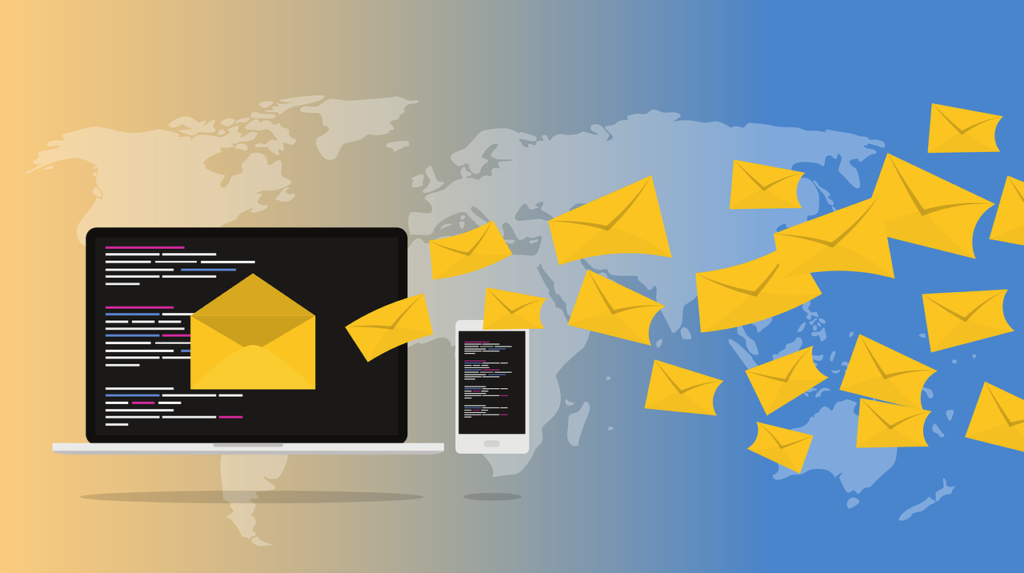
An email is labeled as spam if it is both unsolicited and a bulk email (ex. newsletters, customer communications, etc.).
Let’s break that definition down even more. An electronic message is spam if:
- The recipients’ personal identity and context are irrelevant because the email is equally applicable to many other potential recipients.
- The recipient hasn’t verifiably granted deliberate, explicit, and still-revocable permission for it to be sent to them.
Now that you understand what we mean by spam email, we’ll show you why it’s important you aren’t sending this type of message.
Why spam can be a pricey mistake

Besides wanting to offer your audience valuable content that’s targeted to them, another important reason you shouldn’t send spam messages is because they could cause you to be noncompliant.
The Controlling the Assault of Non-Solicited Pornography and Marketing Act of 2003 (CAN-SPAM Act) was created to protect consumers from spam emails. And brands who aren’t in compliance can face up to $43,280 for each separate email in violation.
Thankfully, the rules in the CAN-SPAM Act are pretty easy to follow once you get your email template set up. Here are the main requirements:
- Include an opt-out mechanism (ex. unsubscribe link)
- Identify the message as a solicitation or advertisement
- Include the sender’s (company) physical postal address
- Don’t have false or misleading header information
- Don’t use deceptive subject lines
Incorporating those elements will help you stay compliant and out of spam filters.
What affects email deliverability
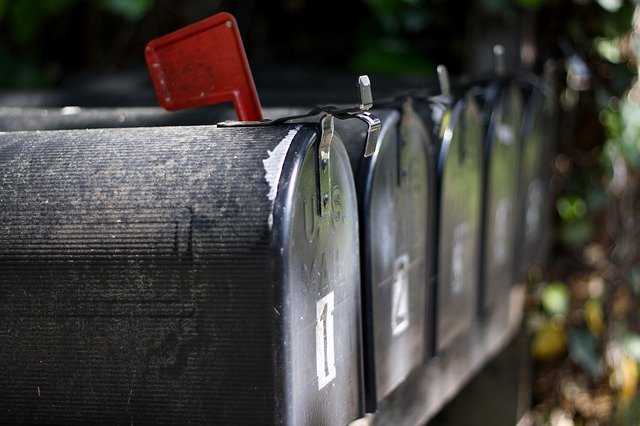
You want to give your audience every opportunity to read your amazing email campaign. And that starts with making sure the email is delivered to their inbox — which is called email deliverability.
- Email deliverability is the rate at which your email makes it into recipients’ inboxes.
That rate goes down when an email bounces or gets automatically filtered into a spam folder. Some marketers like to use email deliverability to gauge the likelihood of their email campaigns reaching their subscribers’ inboxes related to actual delivery (ex. bounces, throttling, bulking, ISPs, etc.).
Sending reputation
There are several factors that can play a role in keeping your emails from reaching their inboxes, including your sending reputation (aka sender score). The sender score assigns a percentage to the likelihood of the sender using email marketing best practices.
That score includes things like:
- Clean email lists
- Complaint rate
- Sending volume
- Message filtered rate
- Sender rejection rate
- Unknown user rate
- Spam trap hits
Sender scores are based on a scale of 0 to 100 (with 0 being the worst), and a score is assigned to each IP address you send from. You can find your sender score for free from services like Validity.
So, why does this score matter?
Well, ISPs use sender scores to determine whether an email belongs in the inbox — or the spam folder. The higher your score, the better your email deliverability will be for your campaigns.
By keeping your reputation high and staying compliant, you’ll not only have a better chance of landing in their inbox — but that will also help you improve your ROI.
Ready to learn how you can improve your email marketing strategy to avoid spam filters? We’ve put together an extensive list of ways you can help your emails hit their inboxes.
38 ways to avoid the spam filter
Now that we’ve covered some of the basics of email deliverability and why you want to avoid sending spam of any sort, it’s time for the main event. Here are 38 ways to make sure your email marketing campaigns avoid the spam filter.
1. Only send emails to people who have opted into your list (well, sort of).

Known as permission-based email marketing, this technique ensures your audience wants to receive your email messages.
But, what if you use Retention.com to capture contacts who visit your website (i.e. email-based retargeting) and aren’t currently your subscribers? Great question!
- We only capture leads in the United States who are on the opt-in list, so no legal worries there. And as for avoiding the spam filter if you reach out to these emails, it’s best to start with an immediate welcome series. That way, you reach them as soon as they hit your site, and you give them a way to unsubscribe if they so choose.
Here are more email-based retargeting best practices:
https://www.youtube.com/watch?v=plYr3NwUdOY
2. Use a double opt-in approach.
When someone signs up for your email newsletter on your website, for example, you send them an immediate email asking them to confirm their subscription by clicking a CTA or following a link. That helps weed out any inadvertent signups, potential errors, or unauthorized uses of email addresses.
It also reminds the user they signed up for your list (us humans forget things easily), and it kicks off what we hope will be a long-lasting relationship between them and your brand.
3. Stop emailing addresses that have repeatedly bounced.

When an email hard bounces, that means there’s an invalid, non-existent, or closed email address. These emails will never be successfully delivered, and these addresses should be removed.
A soft bounce, on the other hand, is when an email gets as far as the recipient’s mail server but bounces back undelivered before it makes it to their inbox. That can be caused by factors like:
- Inbox is full
- Email size is too large
- Server is down
Your email service provider (ESP) should flag any soft or hard bounces, so you’ll want to make sure to remove these addresses from your lists as needed: Always remove hard bounces, and remove soft bounces if they continue.
Considering bounce rates are one of the key factors looked at to determine your sender score, you want to make sure you reduce the number of bounces you have.
4. Regularly clean up your email list.

Contacts go cold. It happens to even the best of marketers. So, make sure you’re regularly cleaning out your lists to remove anyone who hasn’t engaged with you in a while. Sure, it might hurt to think about reducing your list size, but they are only bringing your email marketing metrics down — and possibly increasing your chance of being caught by the spam filter.
Before you cut your delinquent addresses, you can first try to get them back with a re-engagement campaign. You’ve seen what we’re talking about. They have subject lines like, “We miss you,” and “If we don’t hear back from you…” Then if they don’t engage, you’ll know you gave it your best effort and can move on. Sometimes, it’s not you, it’s them.
5. DON’T USE ALL CAPS.
See what we did there? But back to the point: Don’t do that. You shouldn’t use all caps in your subject lines or in your email copy. No one wants to be yelled at, and using all caps can rub people the wrong way. It can seem spammy and annoying. The vast majority of recipients have even said they prefer an all-lowercase subject line to one in all caps.
There are other ways to get your message across. You can:
- Personalize the subject line and email copy
- Use engaging language
- Provide content that’s relevant and valuable to the consumer.
Just don’t resort to the gimmick of putting it all in caps. You’re not helping anyone.
6. And don’t use exclamation points!!!
Sorry, we couldn’t resist. Just like using all caps can be a spam signal, so can exclamation points, especially several in a row. When nearly 70 percent of email recipients say they report spam based solely on the subject line, you better make sure yours doesn’t catch their attention for the wrong reasons (like using exclamation points).
Let your content speak for itself. If the words aren’t strong enough to stand without an exclamation point (or all caps), chances are it’s not very good. So, figure out another way to get your message across.
7. Heat up your IP.
If you’re new to email marketing, your IP address is going to be cold — meaning you are an unknown sender at the moment. Because of the countless spammers who change addresses constantly, cold IP addresses are guilty until proven innocent.
So, you’ll need to put in a little work to make your IP all warm and toasty. Do that by sending emails to a group of dedicated contacts — the ones you know will want to read your newsletters and other campaigns. These are your most engaged customers who are sure to open and click-through. Then, build up your sending list from there until your email marketing becomes more established. You can’t run before you walk.
8. Don’t send attachments.
We’re sure you have tons of amazing PDFs and other files you’d like to share with your audience. But attaching those files to an email isn’t the way to go about it. Most email servers aren’t going to allow attachments, anyway.
Instead, include a clear CTA that links to the content, along with a description about what they will find if they click through. This is a great way to get them to your landing page with a lead magnet so they will convert.
9. And don’t send media.

Along the same lines as attachments, you also want to steer clear of videos, Flash, or JavaScript inside of the email. Most email providers aren’t going to allow them to be delivered. And even if they are delivered, they won’t allow the scripts to function, so just avoid them altogether.
Instead of embedding these files into your email, try this workaround instead: Use a still image/screenshot of the video with a play button in the center that links to the video on your website or YouTube.
10. Move on.
Just like you should clean your email lists of unengaged users, you also need to check for ones whose contact information may have changed. People move countries, change jobs, or close out their email accounts. So, if you haven’t contacted them in a year or more, you should check whether they are still using the address before sending them an email marketing campaign.
Why is this important? Because older email addresses are more likely to have hard bounces, which could be a spam trap.
11. Email ASAP.

Did someone leave an item in their online cart? Send them a cart abandonment email ASAP. Did they just sign up for your newsletter? Send them a welcome email ASAP. Did they view a product without adding it to their cart? Send them a browse abandonment email ASAP. Did they make a purchase, and you need to send them a confirmation? Well, you get the point.
The quicker you email someone, the more likely they are to know who your brand is and why they are receiving your message. That’s important because if they don’t recognize your brand, they might mark it as spam or leave it unopened — which both negatively impact your rates.
12. Optimize your emails for mobile.

The number of people who view email on their phones is only going to go up from here (and it’s already a high percentage). So, your email campaigns better be optimized for these devices.
Beyond simply showing up correctly on smartphones and tablets, you also need to consider how the different components will appear. For example, there will be limited space for subject lines on a smartphone, so keep them short and sweet. And no one wants to scroll forever to read a long email on a phone. Not only is a short message easier for your recipients to look at, but really long emails can also trigger spam filters. So, test all of your campaigns on a mobile device before sending to be safe.
13. Know your brand.
From the tone of your subject line to the look and feel of your email body, you should make it all true to your brand. Use your brand’s fonts, colors, logos, and images from other marketing campaigns to make it clear who is emailing them. Brand recognition is a huge factor in keeping your message out of the spam folder, and it also helps build trust with your audience.
14. Read everything. And then read it again.

What’s your first thought when you read an email that has a typo or poor grammar? It’s not very professional, right? That’s why it’s so important to proofread every campaign before you hit send. If editing isn’t your forte, send a test email to a coworker to have them read it.
Having a misspelling doesn’t only appear unprofessional, but it is also a spam trigger. So, make sure your email is clean before it goes out. You can always use free services like Grammarly to help catch major errors.
15. Steady wins the race.

Something else that can set off the spam alarm is sending uneven batches of emails. For example, if you have 20,000 contacts on your email list, don’t send emails out to 60 percent the first time, 5 percent the second, and then 35 percent at the end. You want to try to keep the numbers steady throughout the sending process.
16. Avoid spam words (duh).
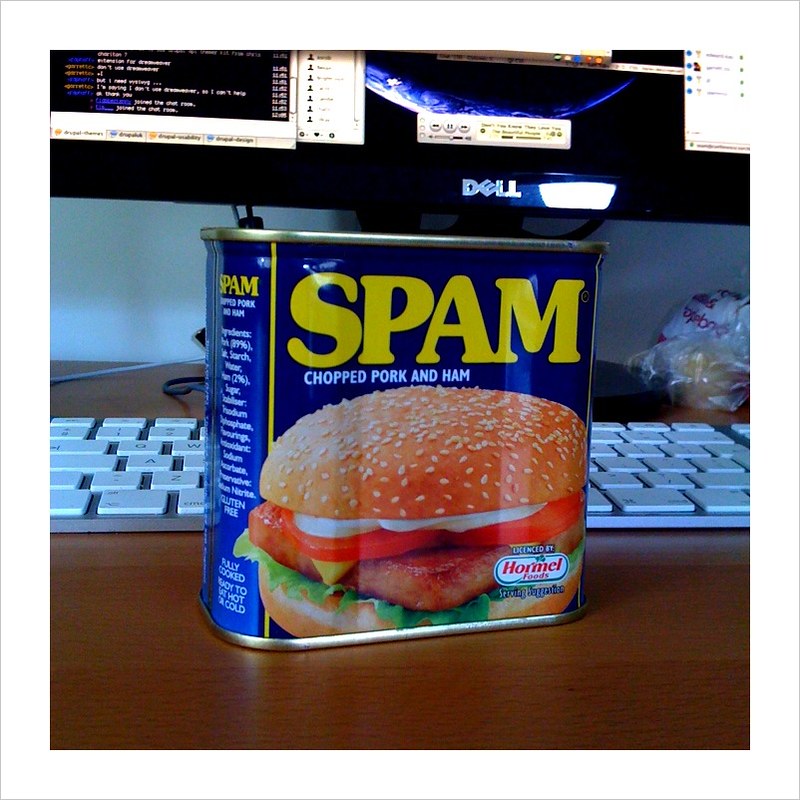
This might sound obvious, and it is — if you know which words are considered spammy. Your ESP is likely to flag any major spam words, but it’s good to have a sense for what is considered spammy. Things about winning, money, or enhancements are big red flags. Here are a few of those spam keywords to avoid:
- 100% free
- Apply now
- Billing
- Bargain
- Call
- Deal
- Hidden
- Medicine
- No obligation
- Stop
- This isn’t spam
Oh, the irony on that last one. Try to keep your text conversational and not gimmicky, and you’re off to a great start.
17. Write truthful subject lines.

You might feel pressured to come up with a clever, catchy subject line. It’s what makes people open your email, right? True, but the subject line’s main purpose is to tell the recipient what they will find if they open the email.
It needs to convey an accurate message — not simply something to catch their attention. You need to be able to produce the goods for whatever the subject line promises them. So while a mysterious or interesting subject line might sound great, it might not properly convey what’s in the message.
18. Provide targeted content.
A great way to do that is by segmenting your lists and only sending contacts what you know they’ll be interested in receiving. You wouldn’t send an email about pet supplies to someone who signed up for your newsletter on gardening supplies.
The content needs to be relevant for them. Not only will that help reduce your number of unsubscribes (which hurts your metrics), but that also personalizes your messages and better engages your audience. Generic emails tend to be marked as unwanted emails.
19. Balance text and images
Did you know spam filters can’t read images (at least not at the moment)? So, you need to make sure you have a good mix of text and visual elements. While you might want to send the entire email as an image design so it appears exactly like you planned, the spam filters won’t know what it’s about and if it’s good or bad.
(Hint: You want to make it as clear as possible that your email is one of the good ones.)
20. Email your lists regularly.

Don’t be a stranger when it comes to your subscribers. Just like you get to know new friends by talking with them regularly, the same is true for your email audience. So, if you rarely email them and suddenly start sending them frequent messages, that can be a red flag for spam filters. The same is true if you stop sending them emails abruptly and then start back again in a few months. ISPs won’t be too happy about that.
You want your campaigns to be consistent — whether that’s daily, weekly, or monthly. Find the rhythm that works best for your brand and audience, and stay true to it.
21. Let them know who it’s from.

Whether it’s the brand name or the name of a prominent person in the company (ex. CEO, marketer who always sends out emails, etc.), make sure your emails are coming from a name the recipient will recognize. They tend to mark an email as spam if they don’t know who it’s from.
22. Survey your subscribers.
We’ve talked a lot about providing your email subscribers with content they will enjoy and find valuable. But, how do you know if you are achieving that goal? Simple: Ask them.
Beyond looking at metrics to see which campaigns performed the best, you can also survey your subscribers to get a better idea of what they want to receive and if they like what you’re sending. You can ask them for feedback on things like the type of content they receive, email frequency, and what you can improve on. Then, put those findings into action.
23. Perform A/B tests.
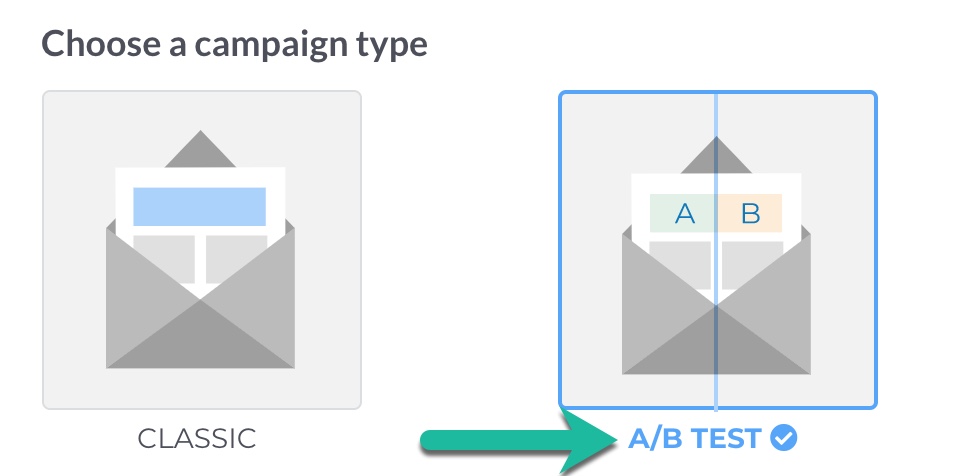
Do your subscribers prefer campaigns about upcoming sales, or would they rather see your latest blog posts? Try sending both and see which one performs the best. Just be sure to only test one variable (ex. subject line, image, CTA) at a time when performing A/B tests so you can get accurate results.
24. Have a conversation.
All of your marketing campaigns should sound natural, like you’re having a conversation with a friend. Don’t use industry terms or verbiage that could cause a reader to stumble or become confused. Not only will you confuse the recipient, but you could also confuse a spam filter, and you know what that means (i.e. not good).
Try reading your content out loud to see how it sounds. If you wouldn’t say it to a friend, don’t write it in an email.
25. Ask contacts to whitelist your email address.
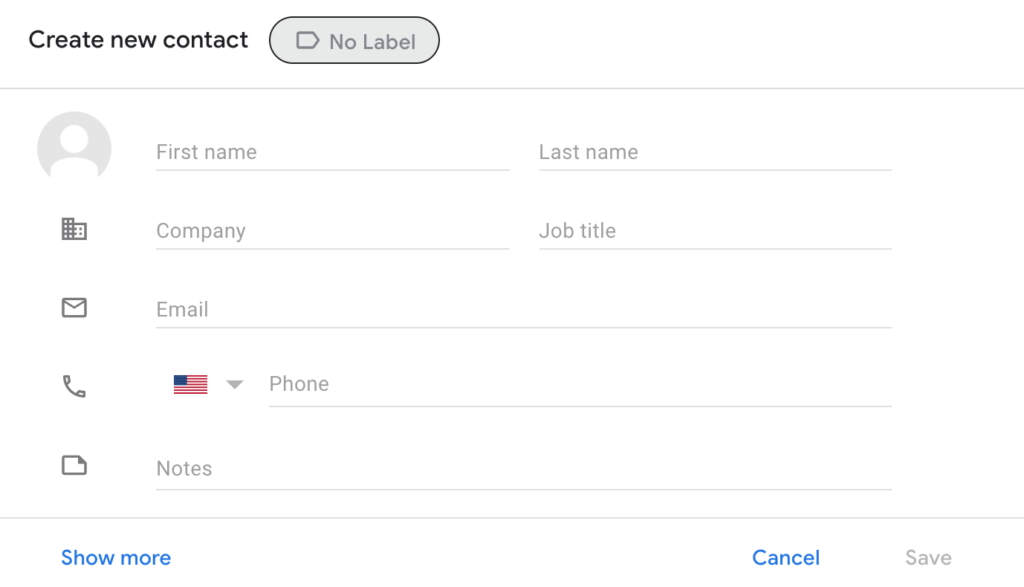
This is the golden ticket to keeping your messages out of spam. Sure, not every contact is going to want to take the time to do this, but it can’t hurt to ask if they will. If they value the content you send, they aren’t going to want to miss any of your messages — making them more likely to add your email address to their address book. And that’s something spam filters really respect.
26. Don’t include large image files.

Sending an email with a large image is a good way to trigger the spam filter. There’s an easy fix for that, though. Use the web-resolution version of an image to prevent that issue, while still sending them some visually appealing campaigns.
27. Know your email metrics.
To figure out if something is off (and possibly harming our reputation), you need to be tracking your email metrics. And here are the metrics to be looking at:
https://www.youtube.com/watch?v=q5Q5HM87-_s
28. Test different providers.
We mentioned how important it is to optimize your emails for mobile to ensure they are appearing the way you intended. But, it’s also important to make sure your messages are displaying correctly with each email provider.
For example, your email might look great for a Gmail user but then not so great for someone using Outlook. So, make sure you test with different providers.
29. Don’t embed forms.
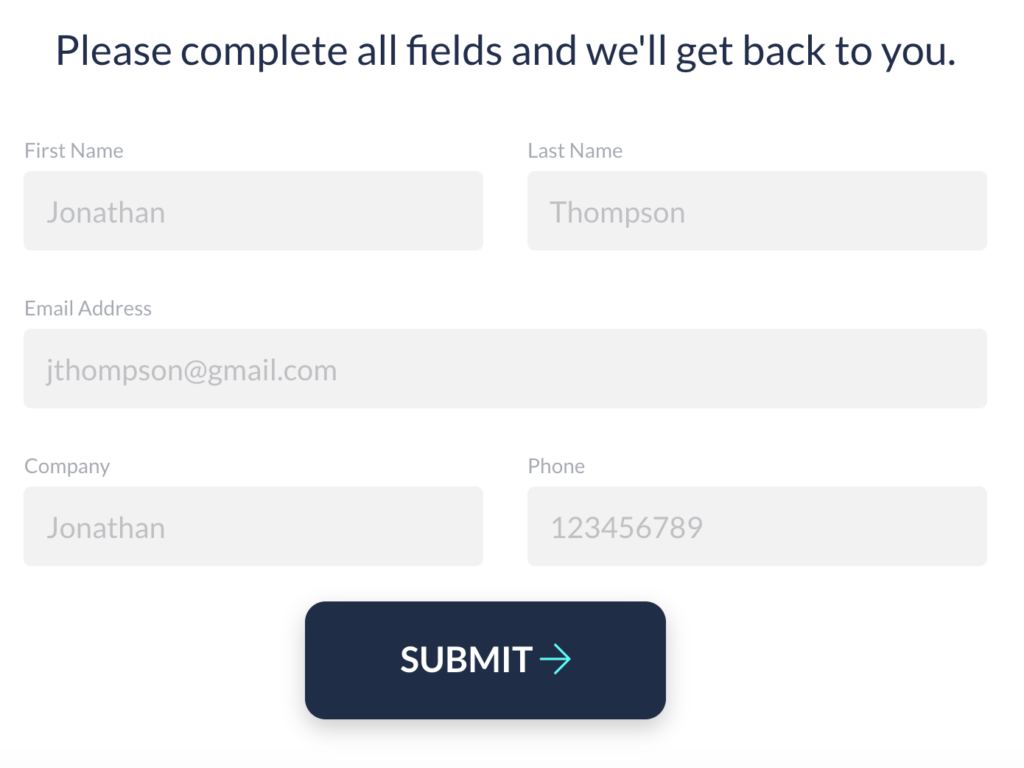
Most email providers don’t support forms that are directly embedded into the email message because of possible security risks. Instead, include a clear CTA that links to a landing page with the form.
30. Use a reputable ESP.
You work hard to build your reputation, so only use an ESP that does the same. Look for ones that have established track records with a variety of ISPs, which will mean their servers have good reputations. That will help give your emails a better chance of being delivered.
Plus, if one of your emails happens to hit a spam trap and puts you on a blacklist, the ESP can help sort out the issue on both sides.
31. Stay away from red fonts.

There are plenty of other colors to choose from, so just don’t use red as your font color. Red can be associated with being negative, so there’s really no reason for it. Also, don’t use white text on a white background because this is a common practice of spammers and will cause your email to get flagged.
32. Don’t go SEO crazy.
Google doesn’t like sites that throw massive amounts of keywords into their posts in an attempt to improve its rankings. And the same can be said for emails and spam filters. Stuffing emails with keywords is harmful for the consumer experience because who wants to read something like that? And if they don’t want to read your email, you know where it’s going to end up.
Again, this issue can be fixed by writing like you would talk. You are writing to other people, you know?
33. Let people unsubscribe.
Not only is this part of the CAN-SPAM Act, but giving your audience a way to unsubscribe will reduce spam complaints. Simply include an “Unsubscribe” link in your template that takes them to a page where they can either unsubscribe from all of your communications or specific lists.
When they unsubscribe, you’re required by law to remove them from your lists. If you choose to do this manually, make this a top priority.

Include the Unsubscribe option at the top or bottom of your email.

34. Include their name.
Just like you should include a sender’s name, you should also make sure to include your recipient’s name in the “To:” field. That shows them (and spam filters) that you know your recipient.
35. Make the email viewable in web browsers.

Of course, you want your email to appear perfectly in their inbox. However, no matter how hard you try, an email client can still display the email poorly. So, make sure to include a link that will allow them to view the entire message in a web browser.
36. Use alt text in images.

Several email clients block images by default. And if that’s the case, your recipients won’t see any of your images unless they click a button to show them — or if they change their default settings. By adding alt text to the images in your emails, they’ll be able to understand your message even if they can’t see the images.
That’s especially important to do if you use an image as your CTA. With the alt text, they wouldn’t see anything. However, when you add the alt text to the image, they will know where to click to follow the CTA.
37. Authenticate your domain and emails.

To keep malicious users from mimicking your domain to scam your subscribers, you’ll want to authenticate your domain and emails. By doing that, you’ll signal to ISPs that your emails are really being sent from your domain and can be safely delivered to your subscribers’ inboxes. Here are four ways you can do that: DKIM, SPF, Sender ID, and DMARC.
38. Choose the best send times.

One component of having a successful email marketing campaign is sending it at the right time. If it’s not hitting subscribers when they are most likely to read an email, they might not open it, which affects your metrics and sender score. So, check out when subscribers are opening emails, and perform A/B tests to see when you’ll get the best results.
Good email marketing = avoiding spam filter
With spam accounting for about 14.5 billion messages globally a day, it’s obviously a big problem for both email clients and consumers.
By following good email marketing best practices and compliance laws, you can keep your emails out of your subscribers’ spam folders and avoid becoming part of that statistic.
